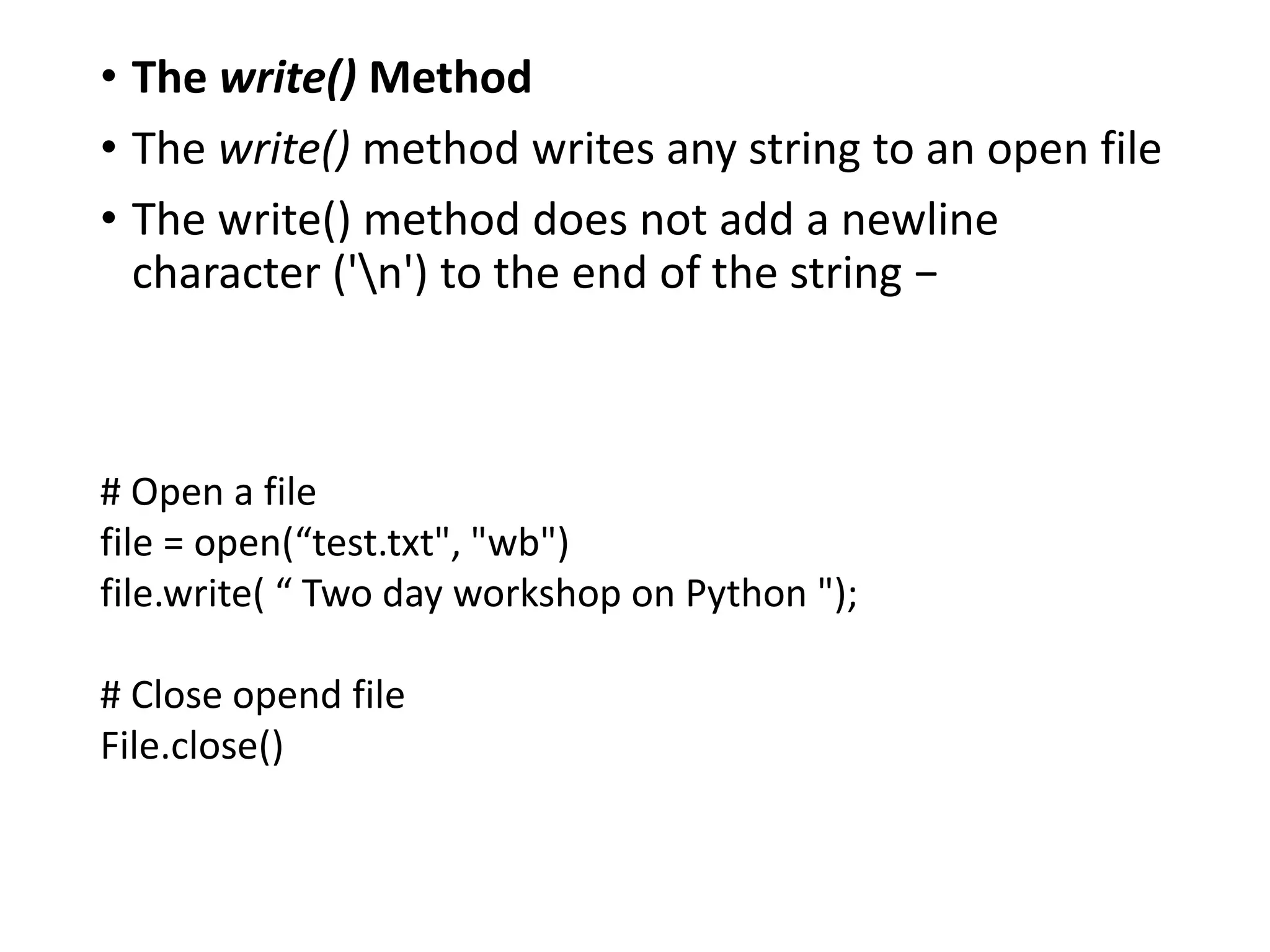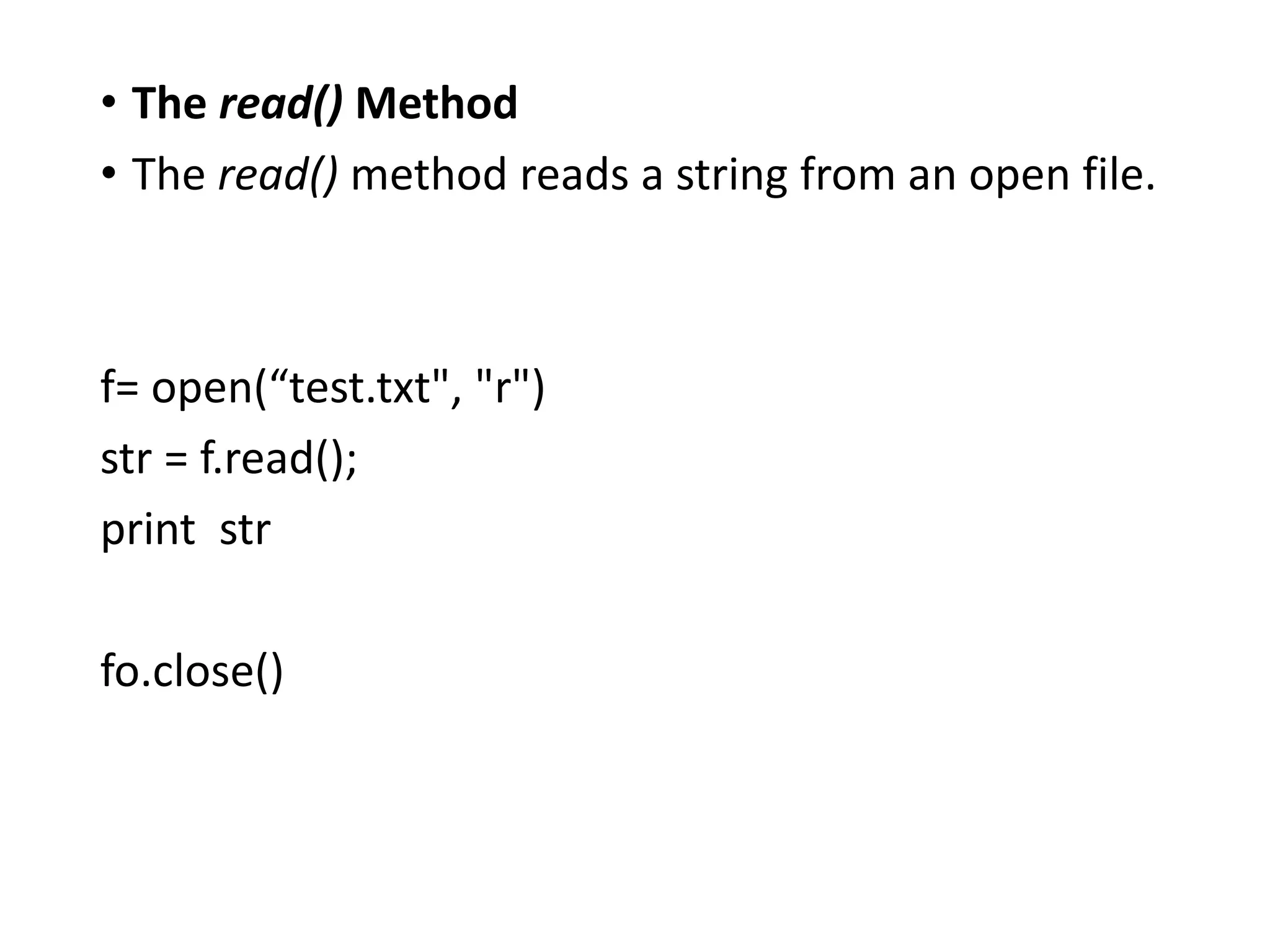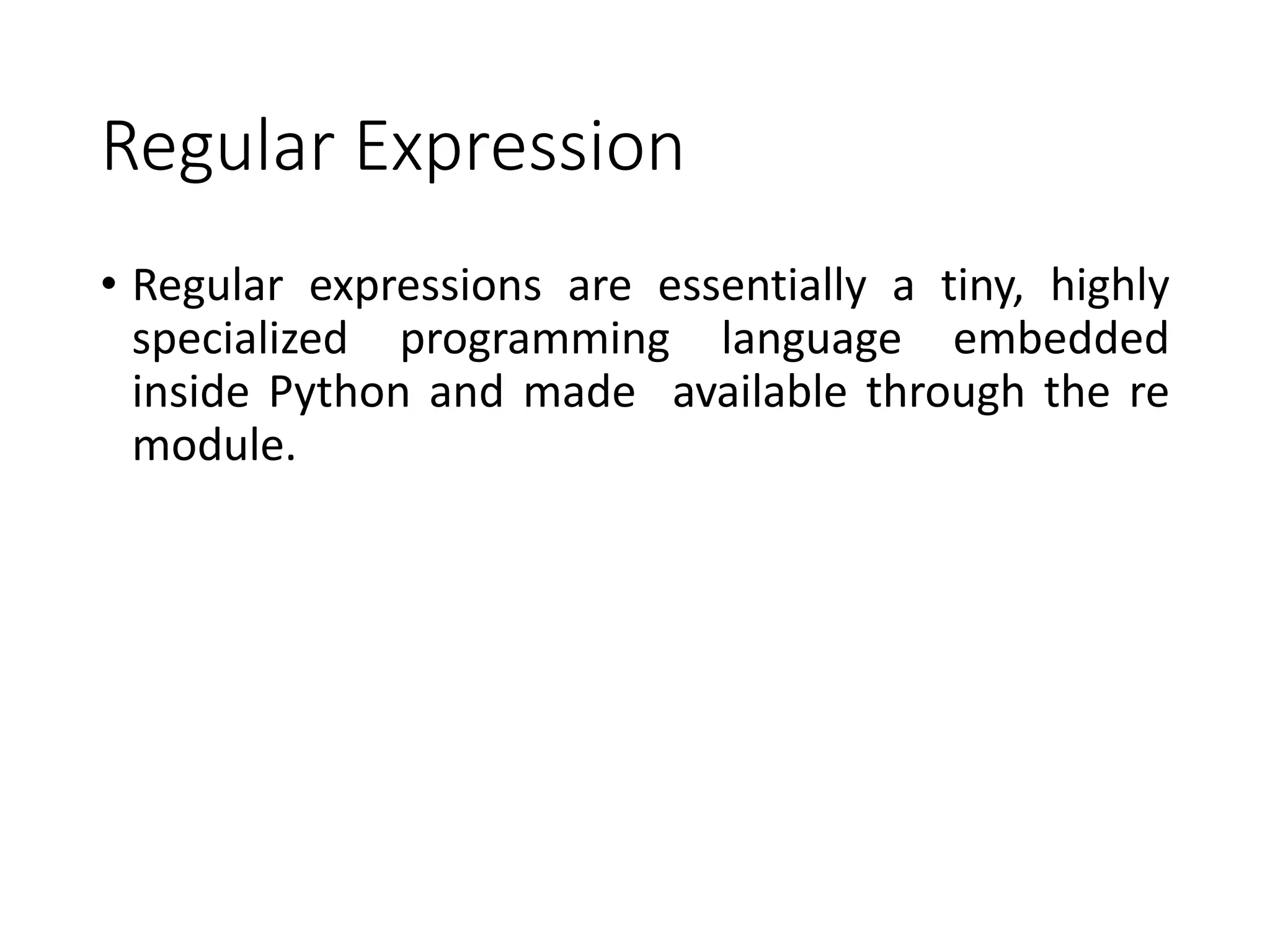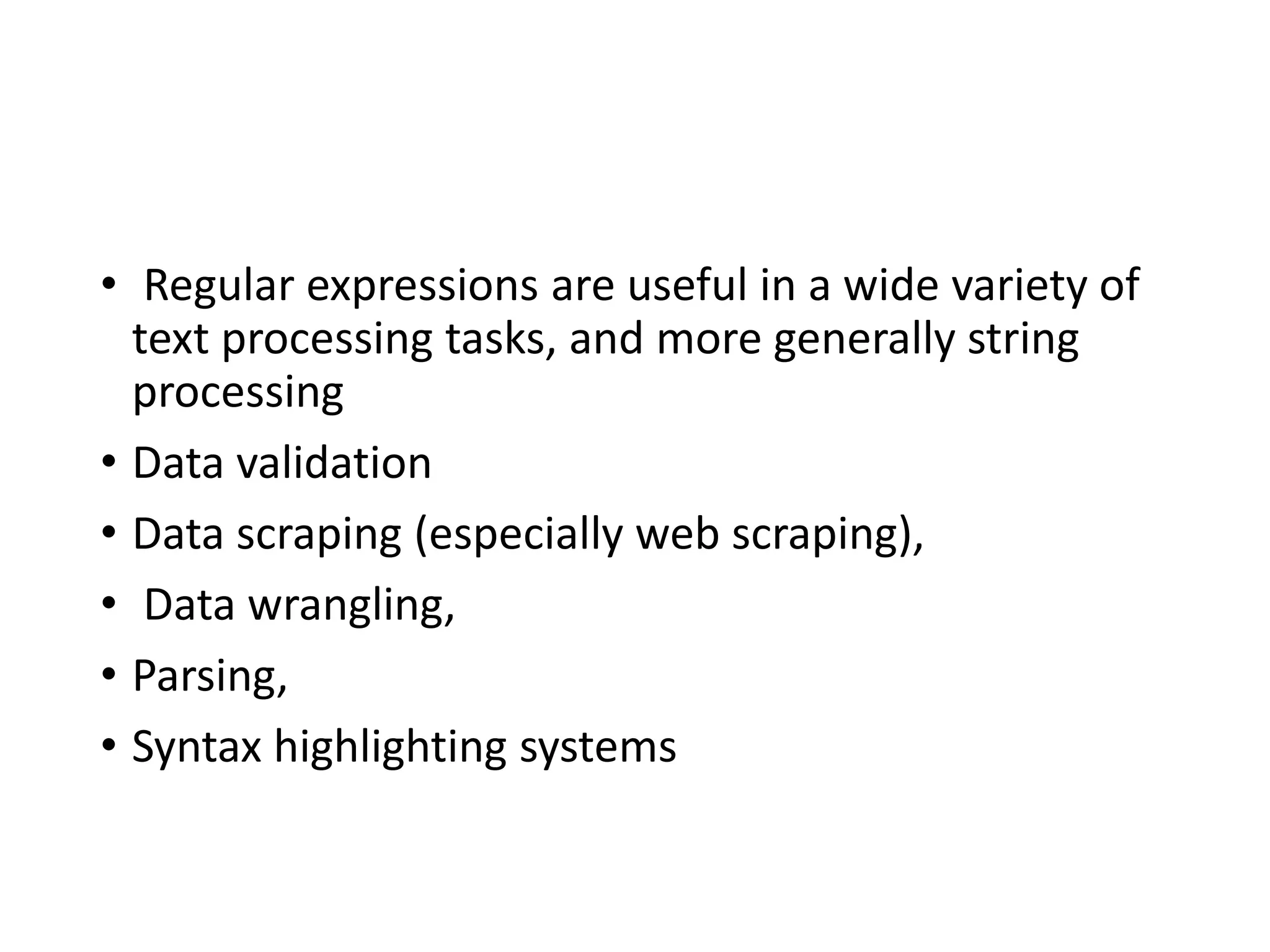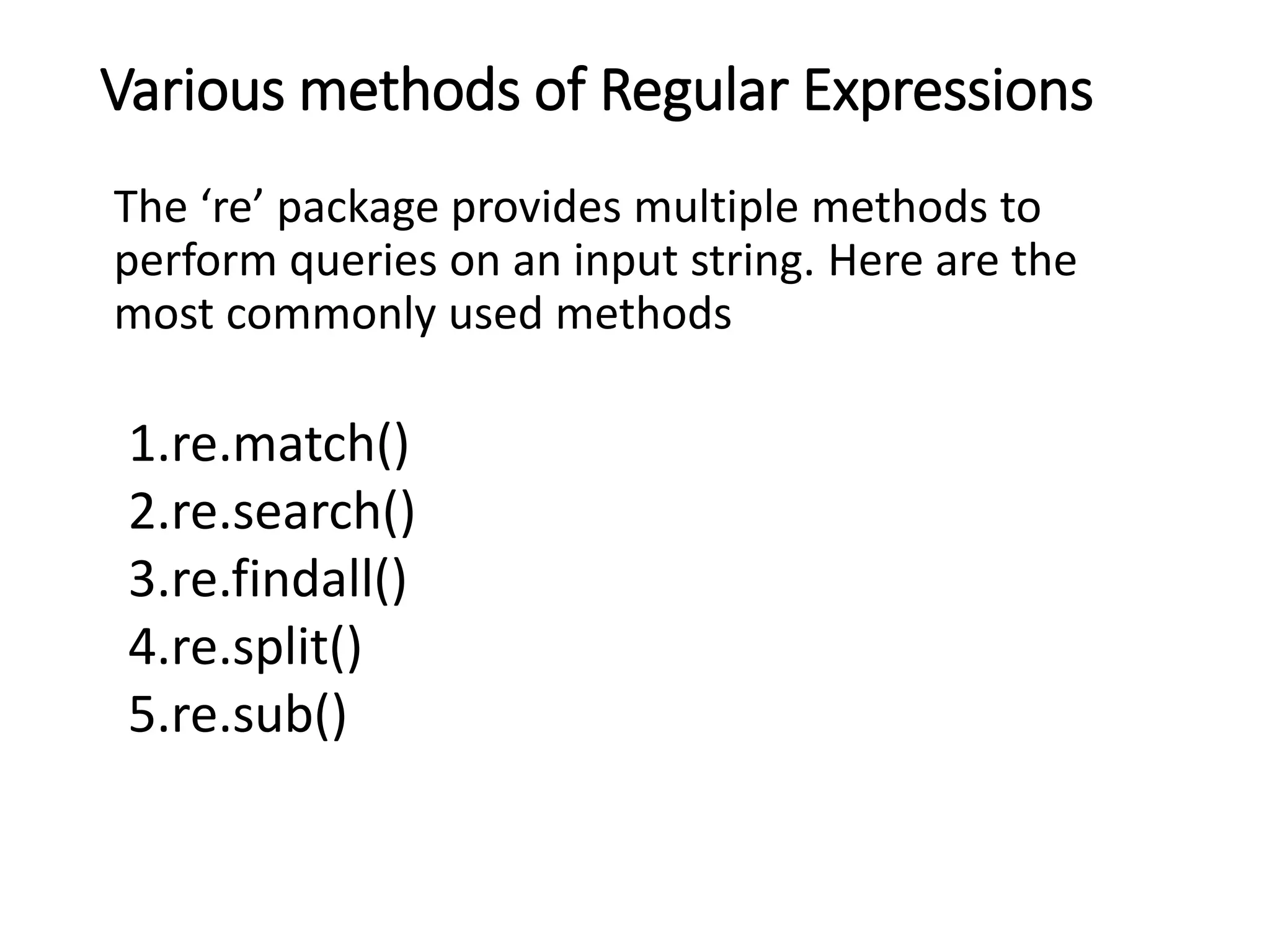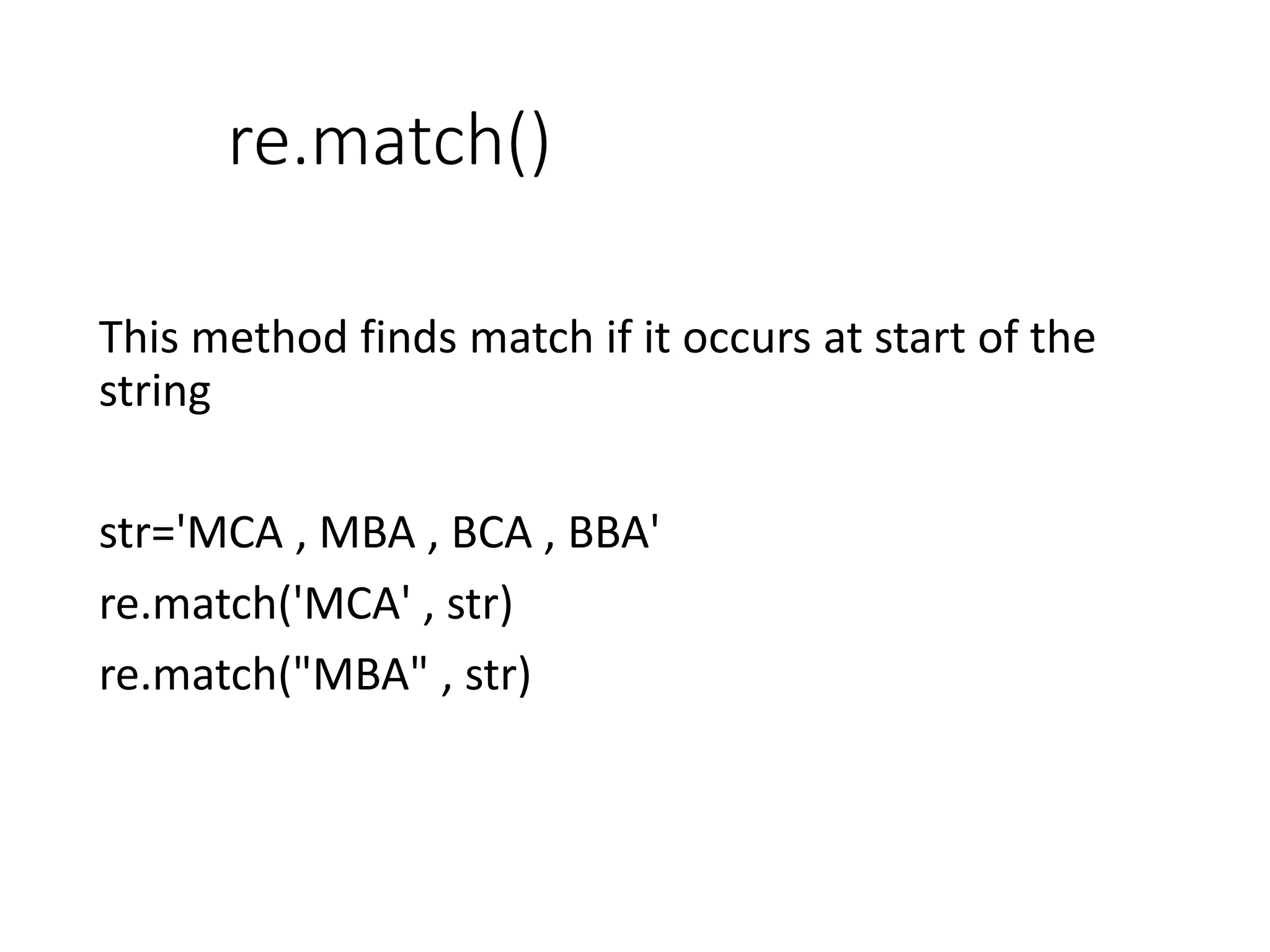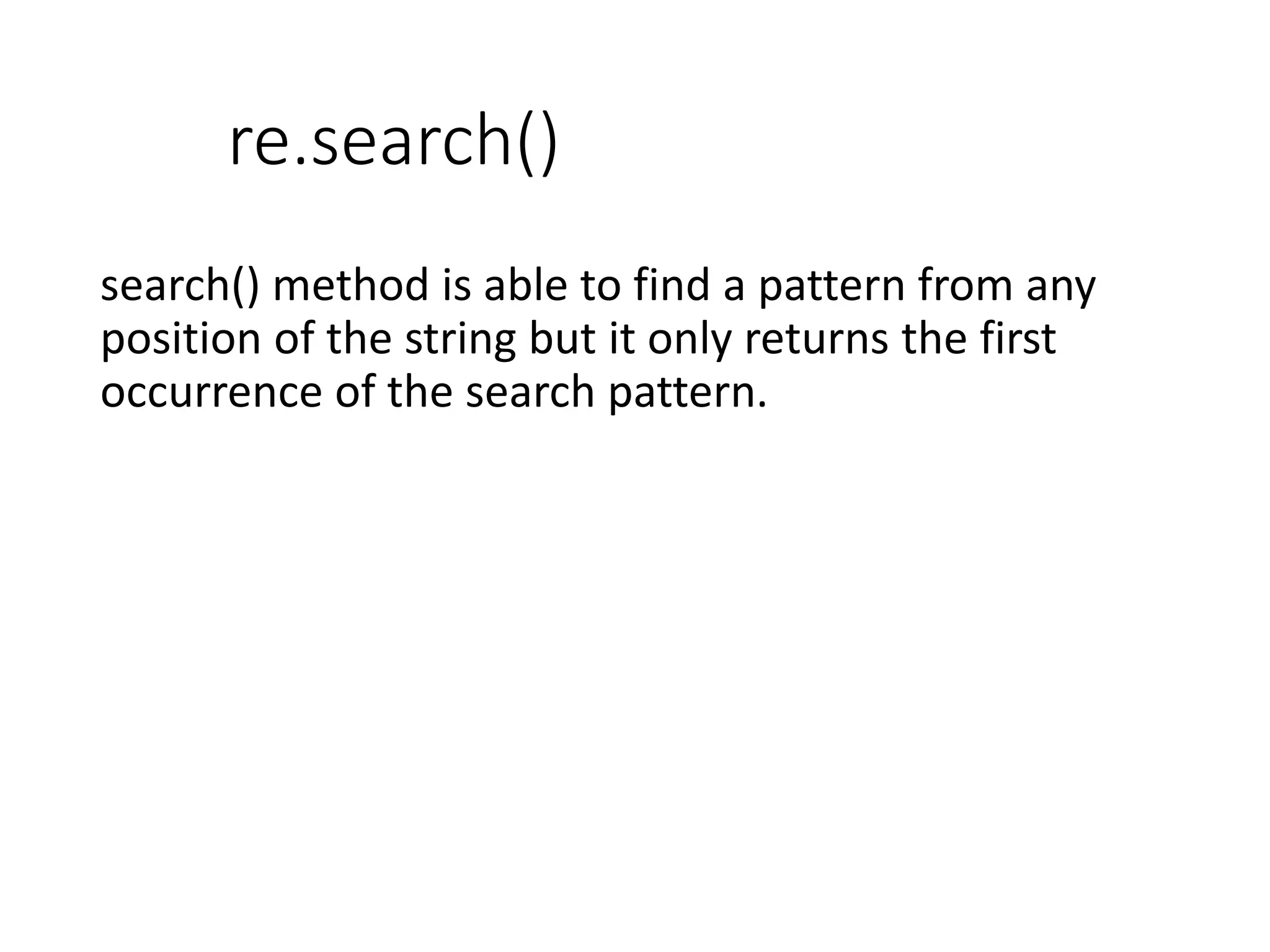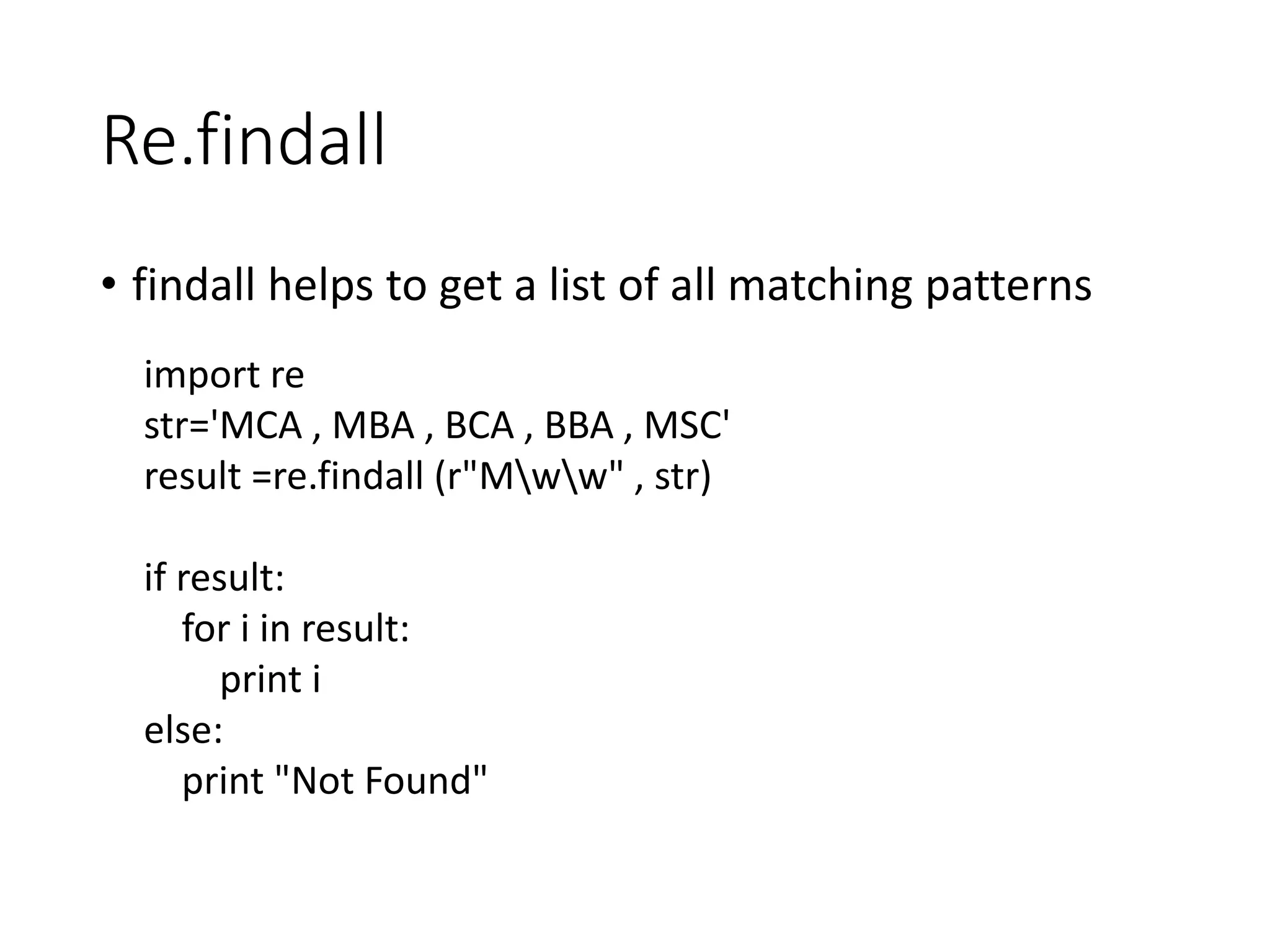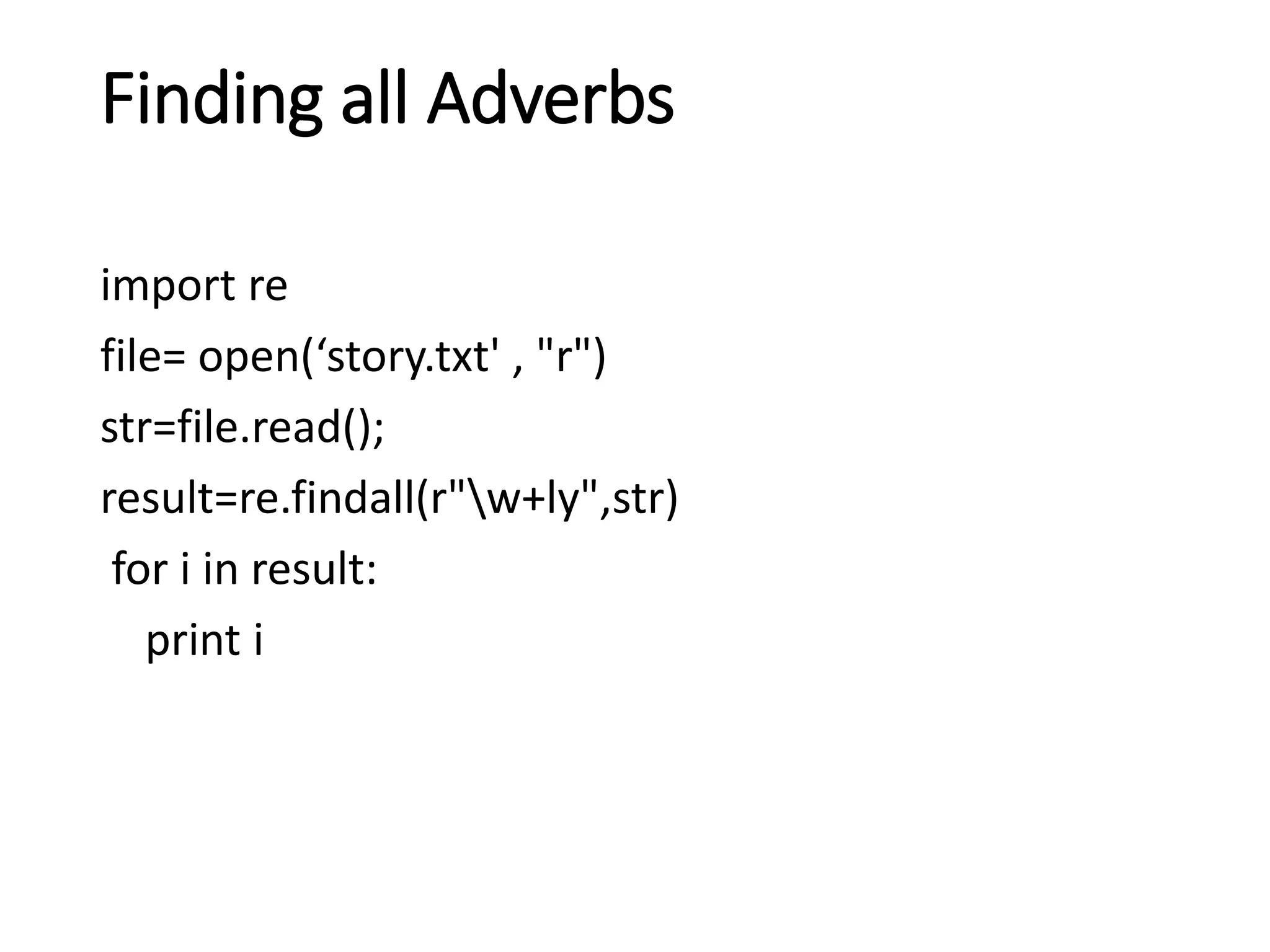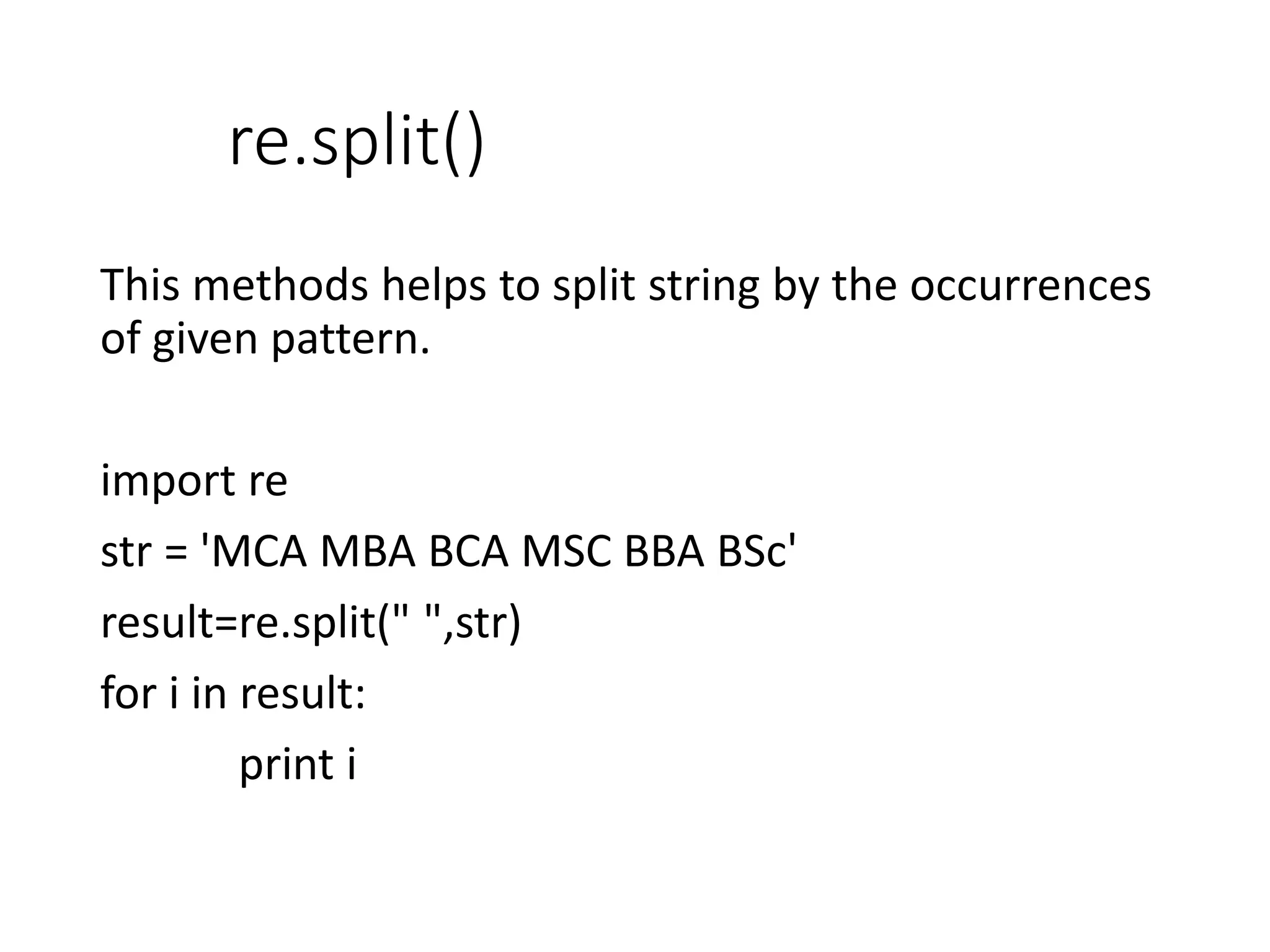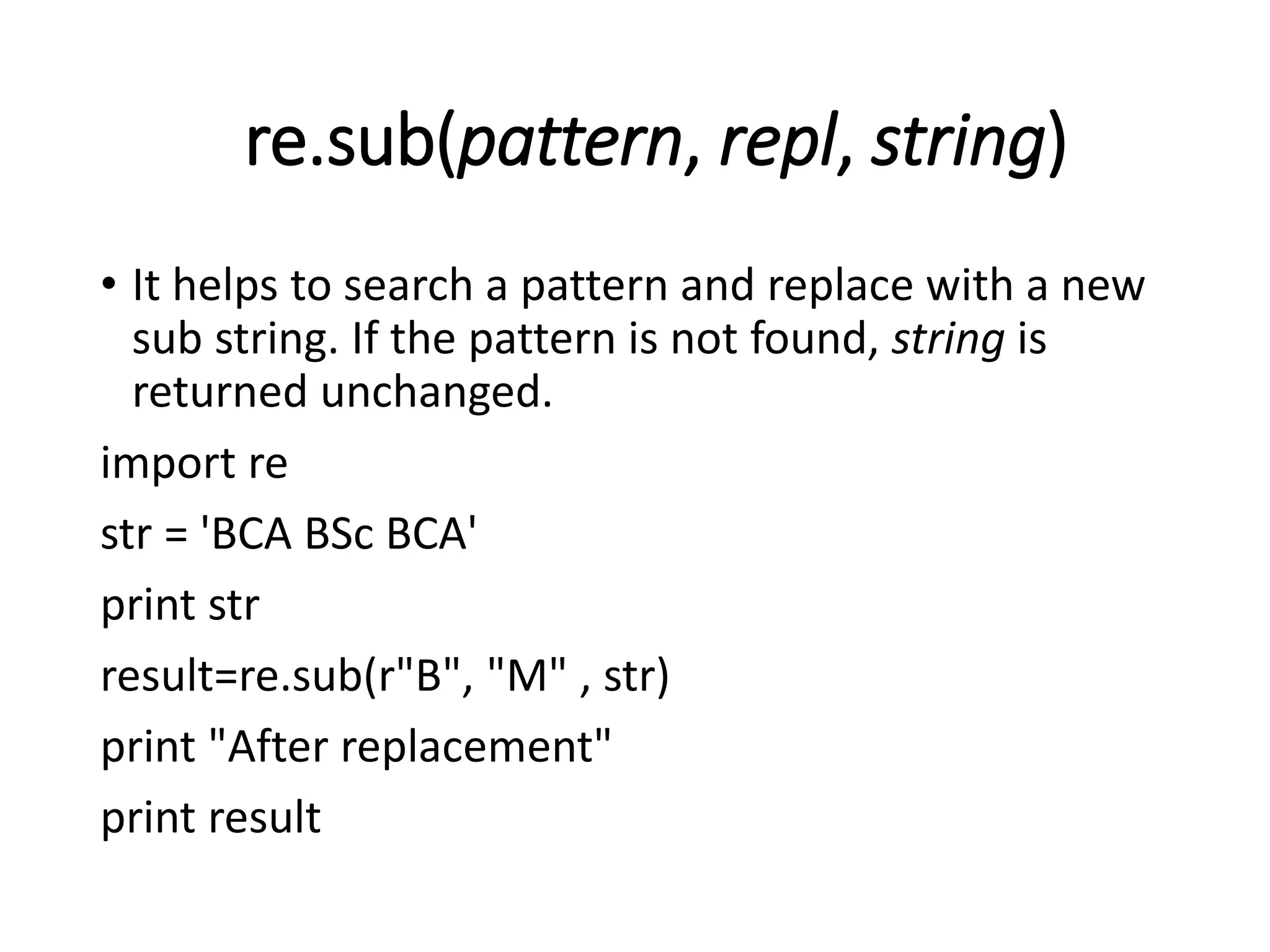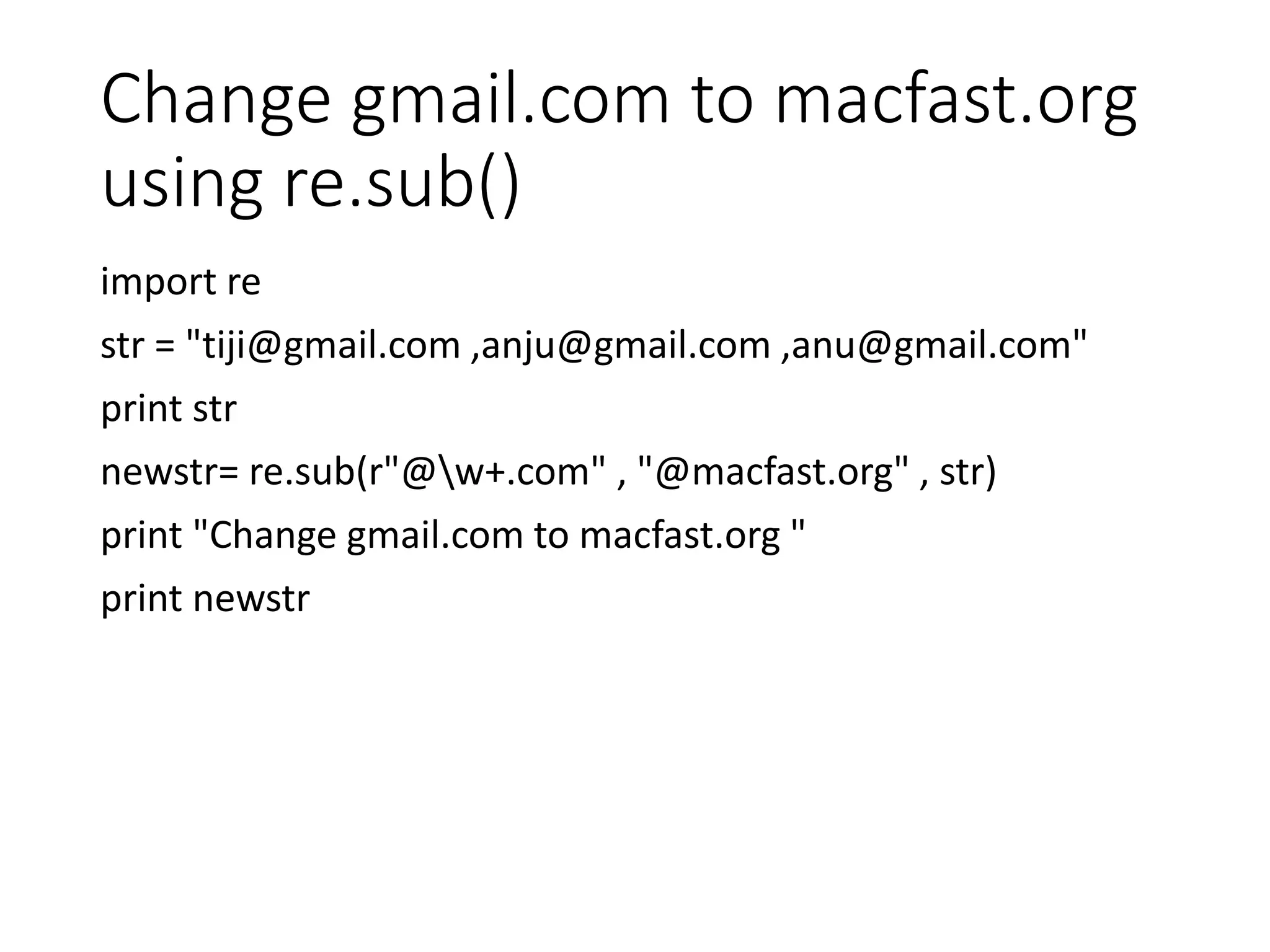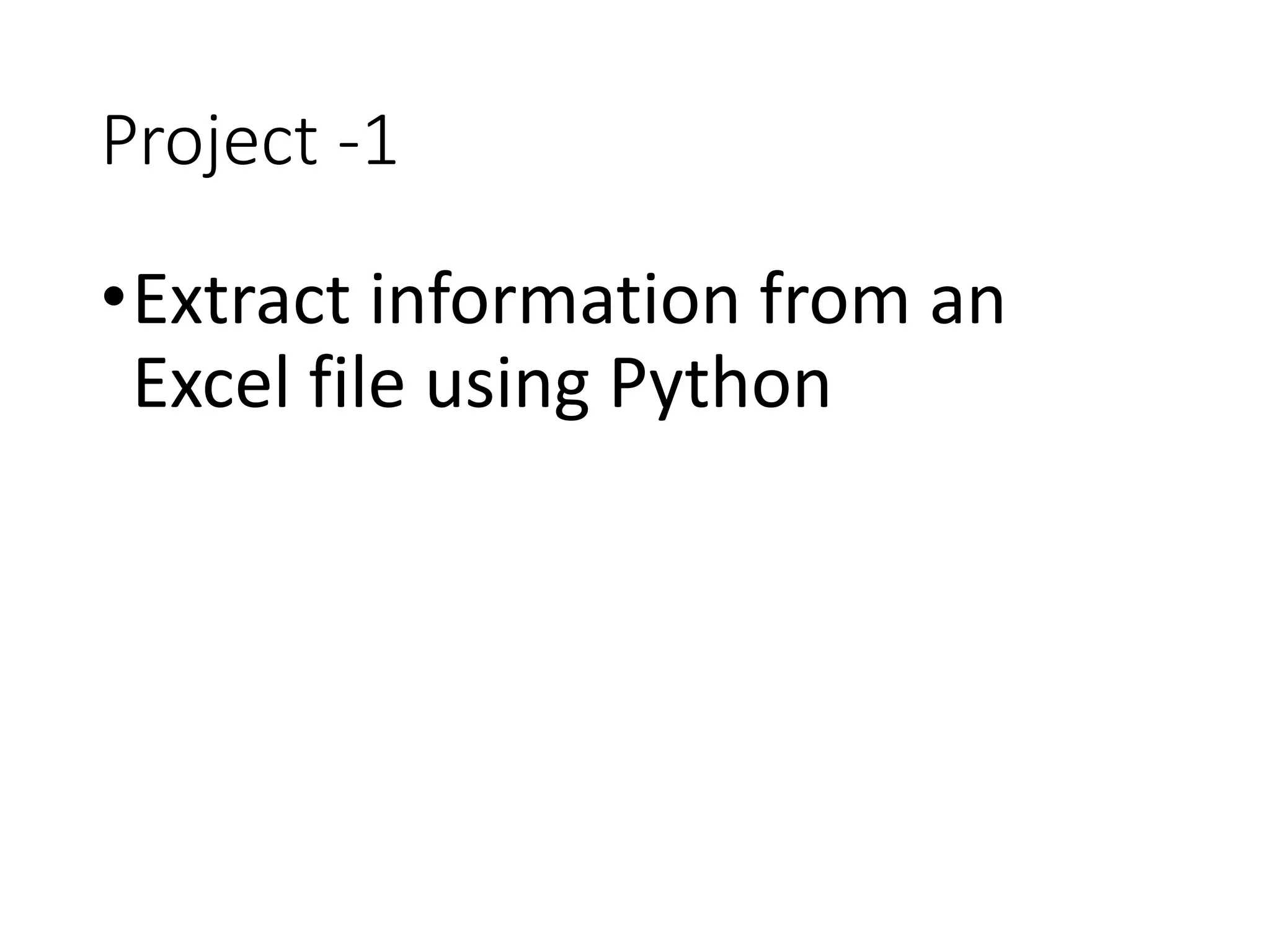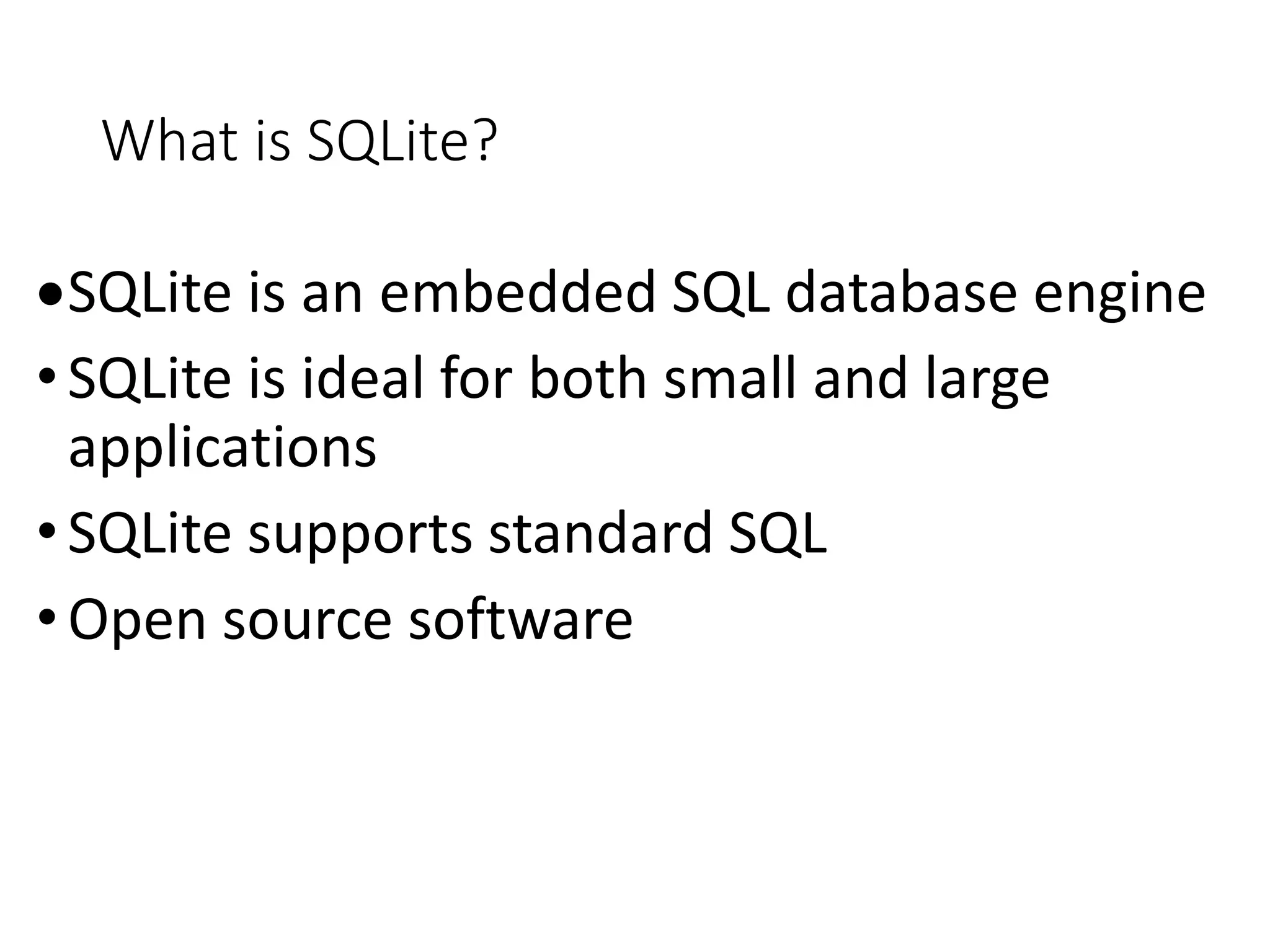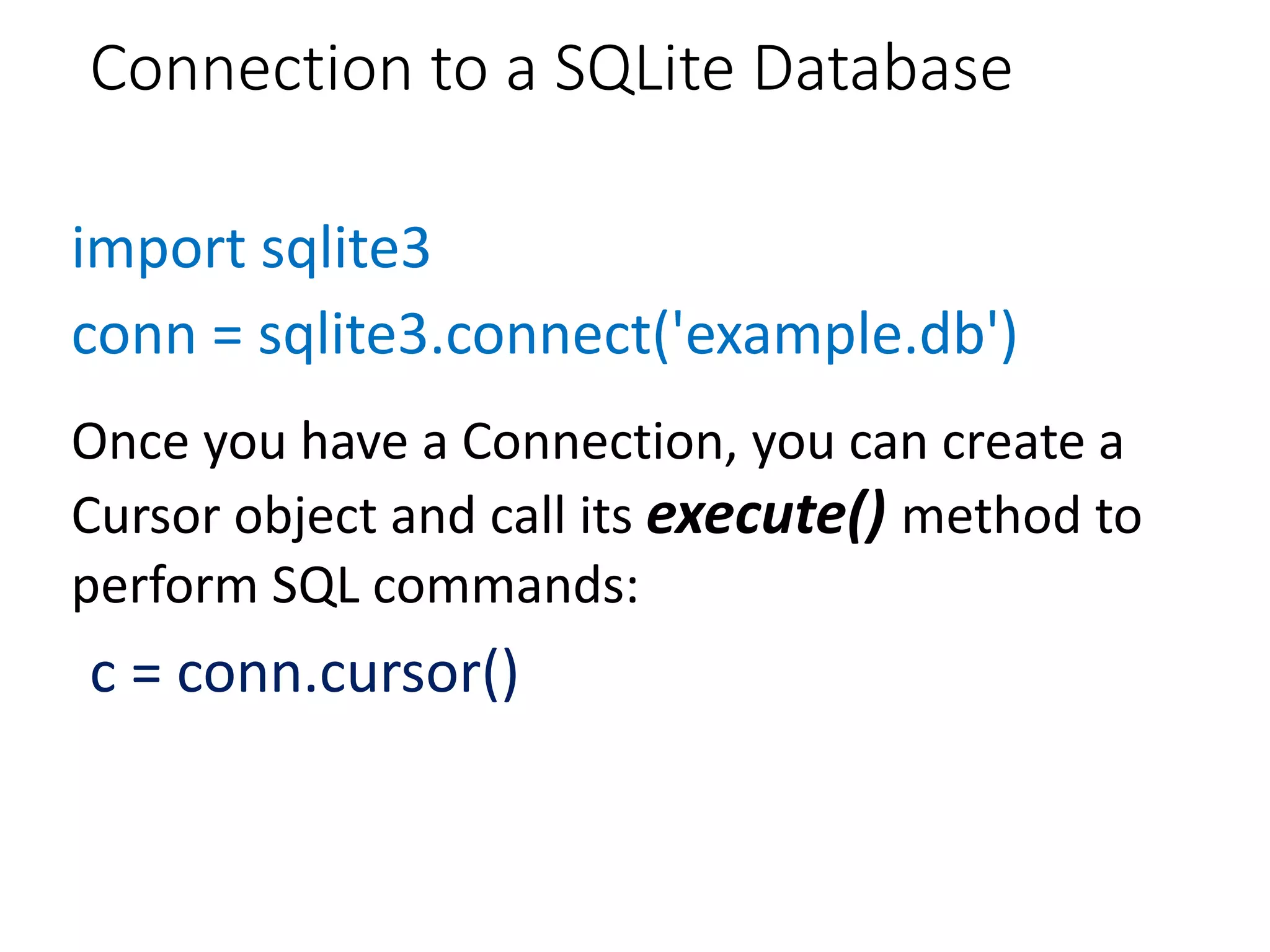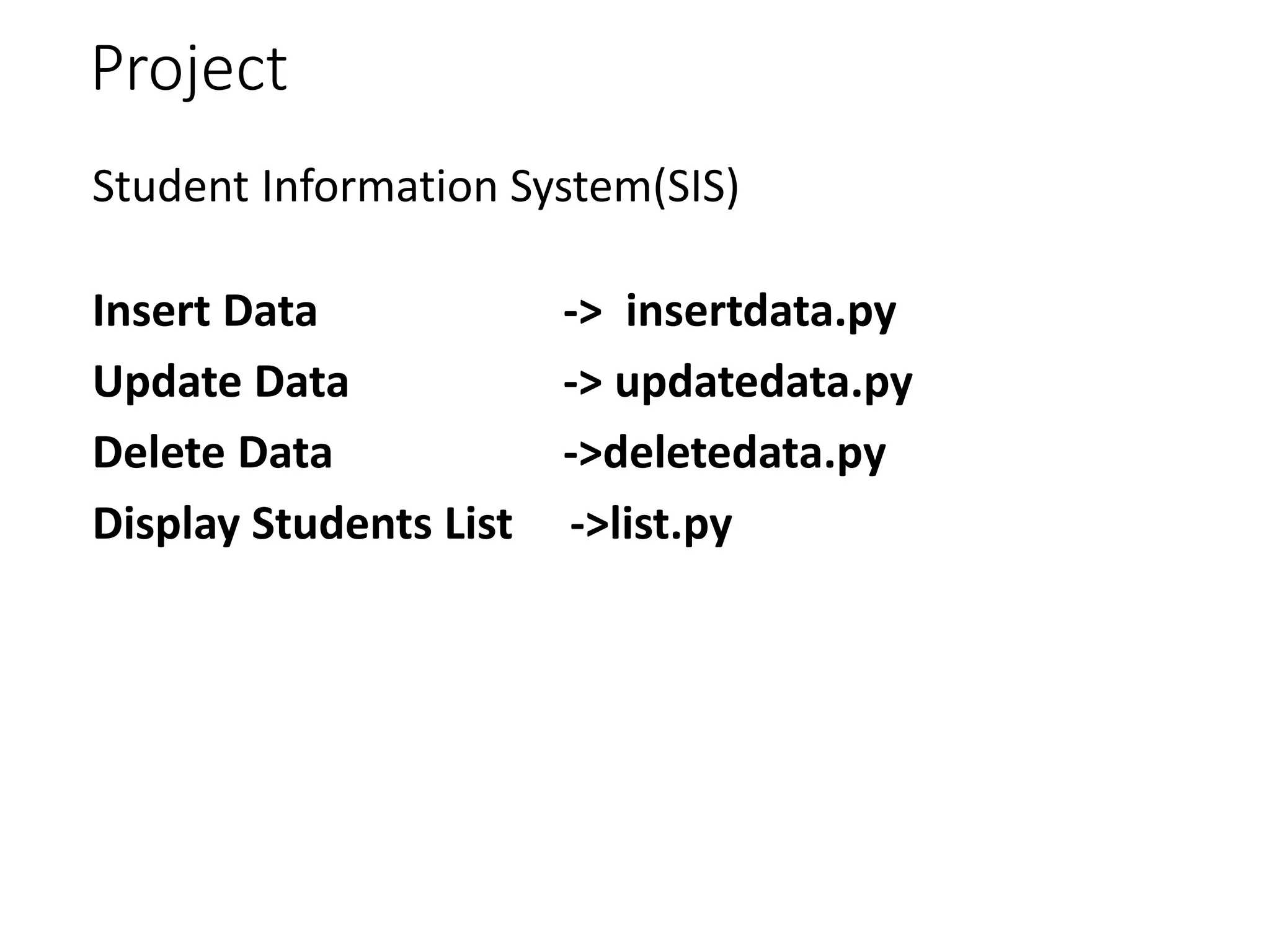The document provides an introduction to programming in Python. It discusses how Python can be used for web development, desktop applications, data science, machine learning, and more. It also covers executing Python programs, reading keyboard input, decision making and loops in Python, standard data types like numbers, strings, lists, tuples and dictionaries. Additionally, it describes functions, opening and reading/writing files, regular expressions, and provides examples of SQLite database connections in Python projects.
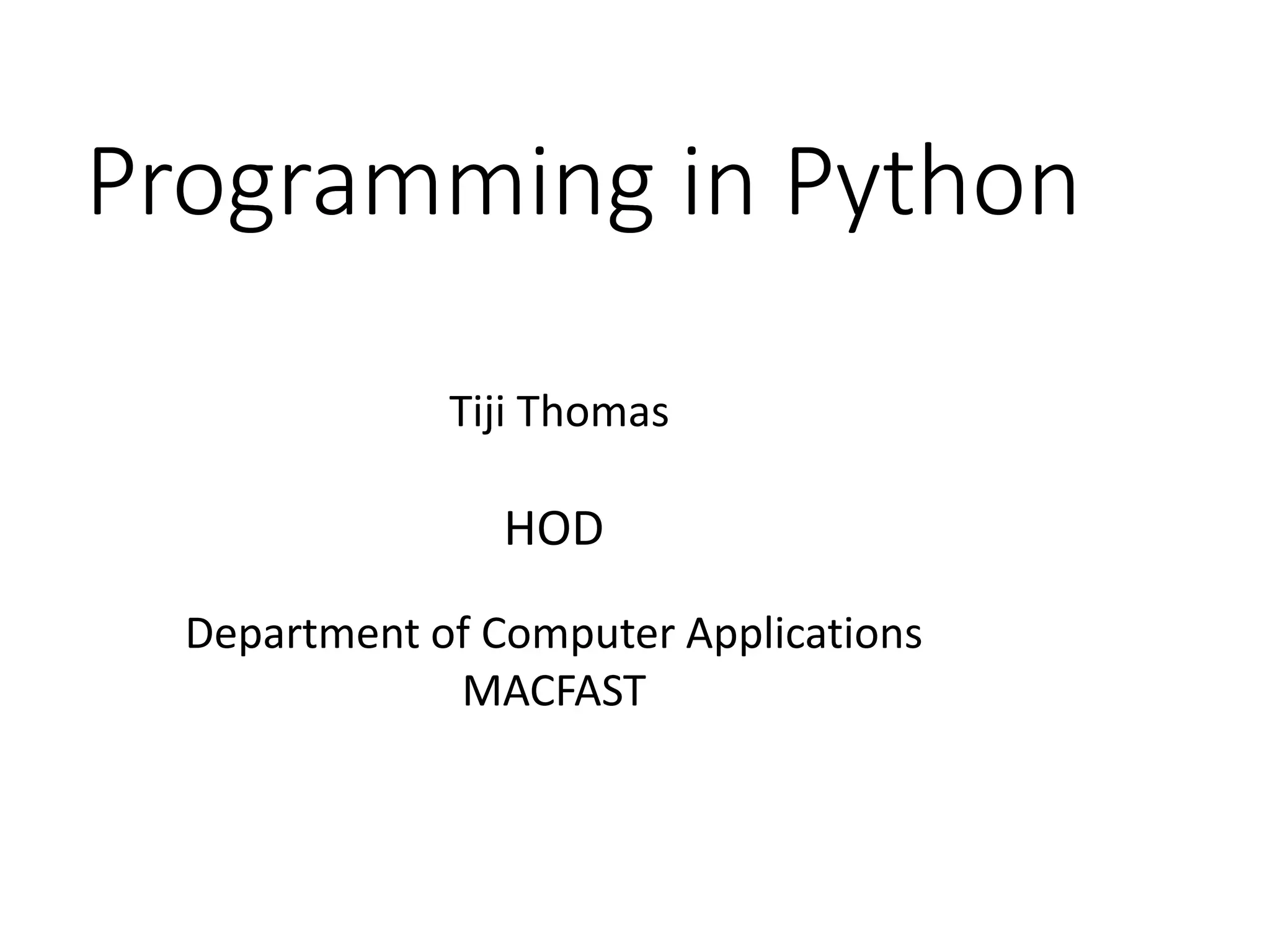

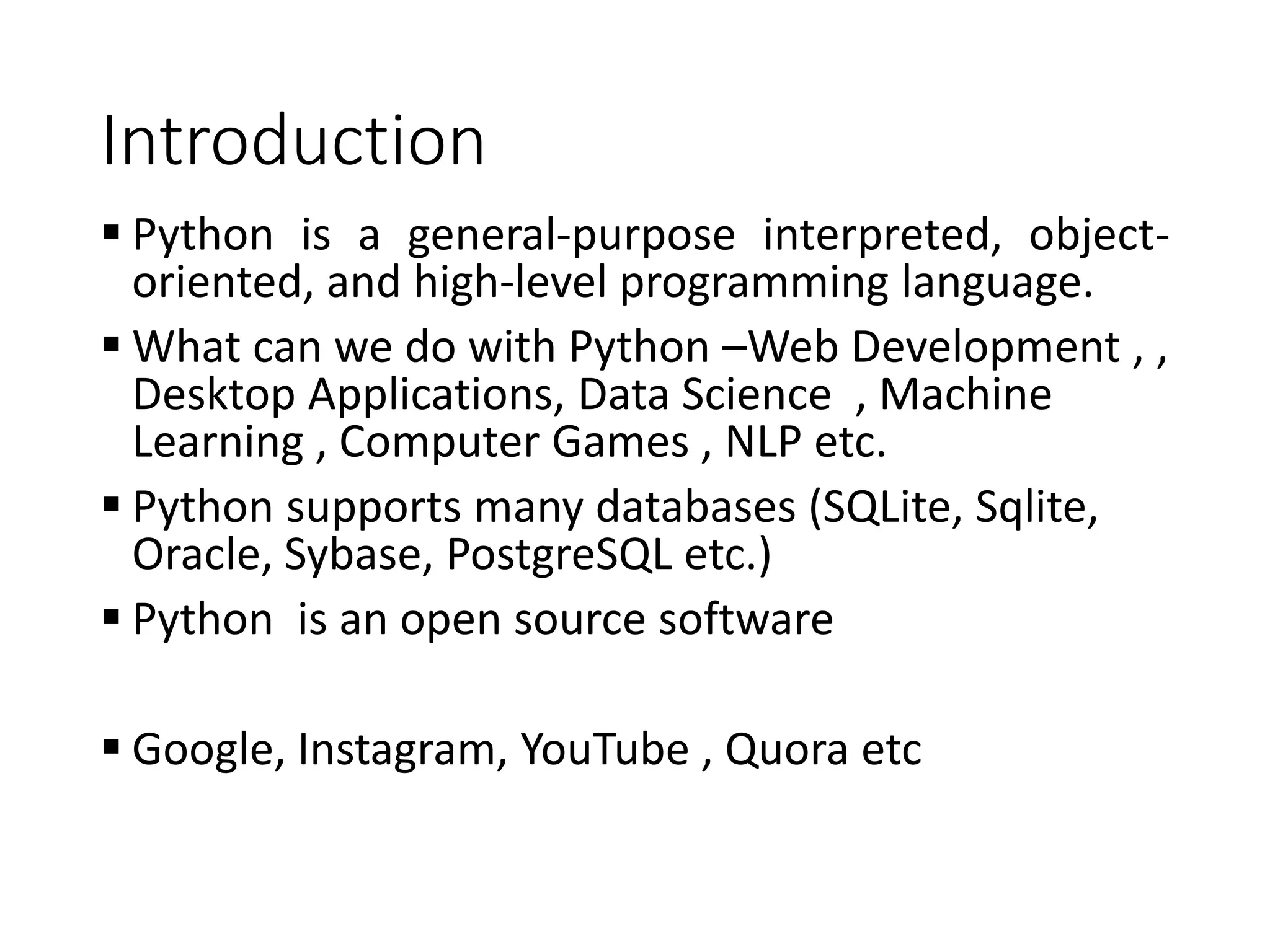
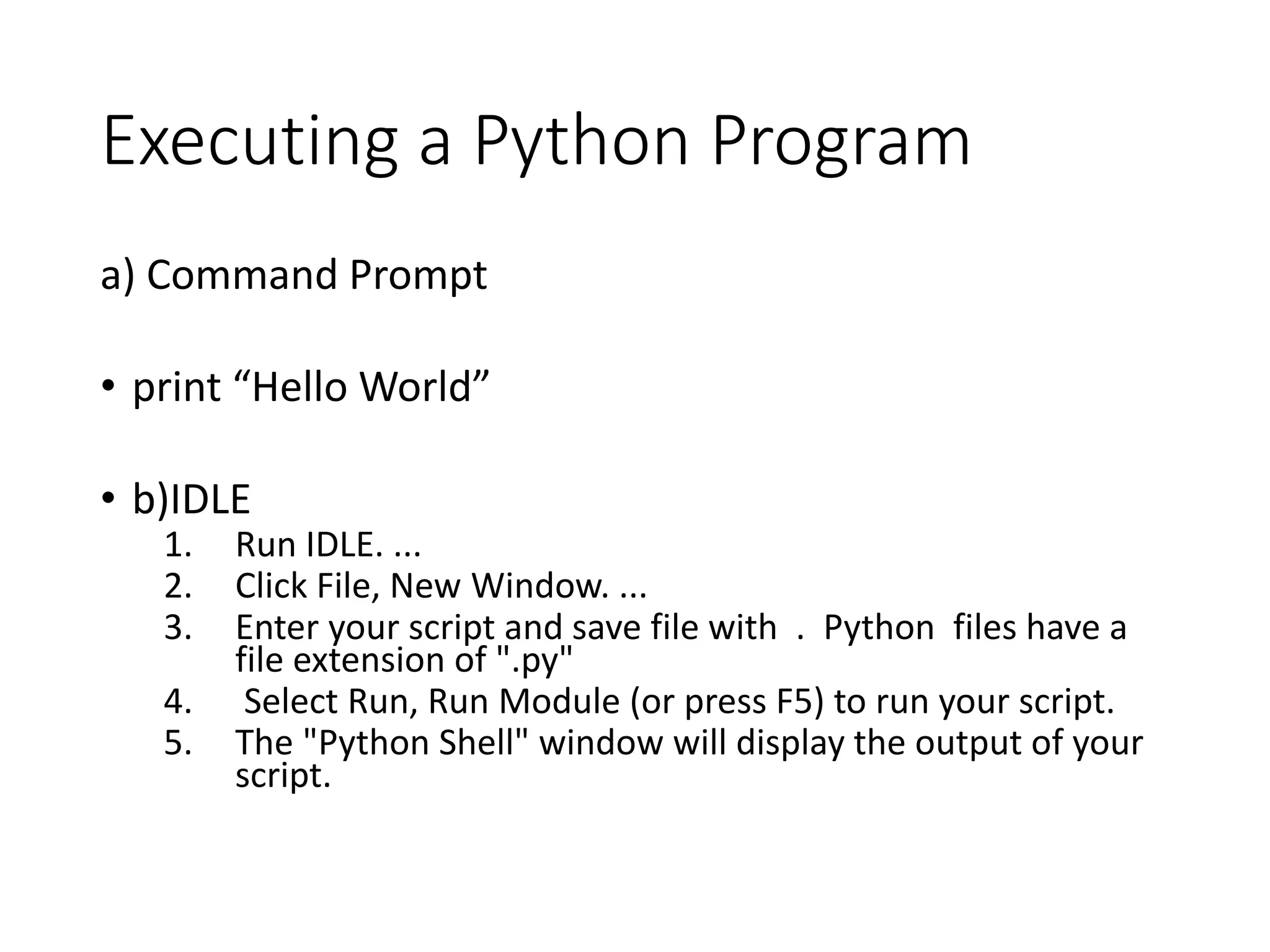
![Reading Keyboard Input • Python provides two built-in functions to read a line of text from standard input, which by default comes from the keyboard. These functions are − • raw_input • input • The raw_input Function • The raw_input([prompt]) function reads one line from standard input and returns it as a string (removing the trailing newline). str = raw_input("Enter your input: "); print "Received input is : ", str](https://image.slidesharecdn.com/programminginpythonbytijithomas-171208004450/75/Programming-in-Python-5-2048.jpg)
![• The input Function • The input([prompt]) function is equivalent to raw_input, except that it assumes the input is a valid Python expression and returns the evaluated result to you. str = input("Enter your input: "); print "Received input is : ", str](https://image.slidesharecdn.com/programminginpythonbytijithomas-171208004450/75/Programming-in-Python-6-2048.jpg)
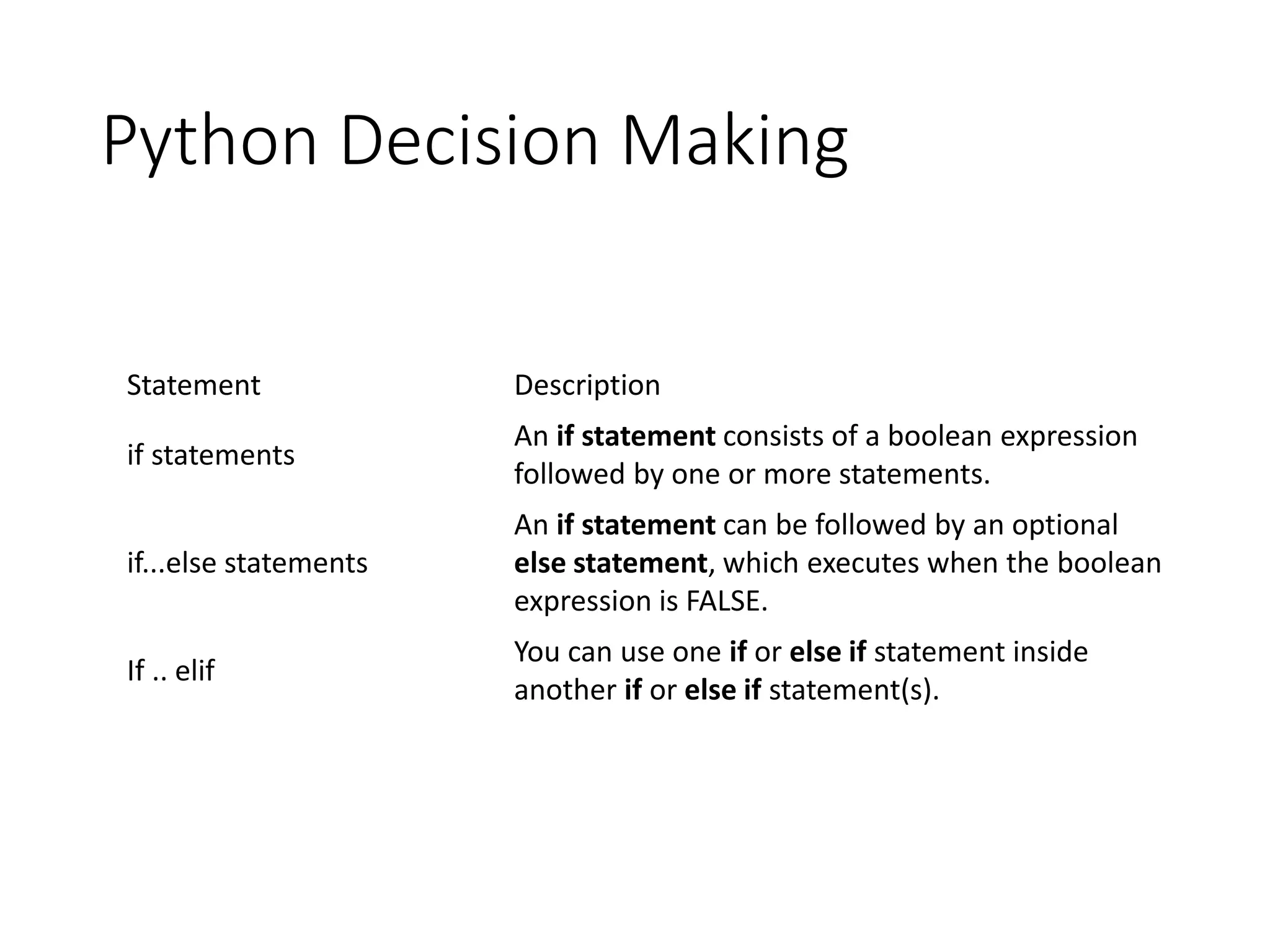
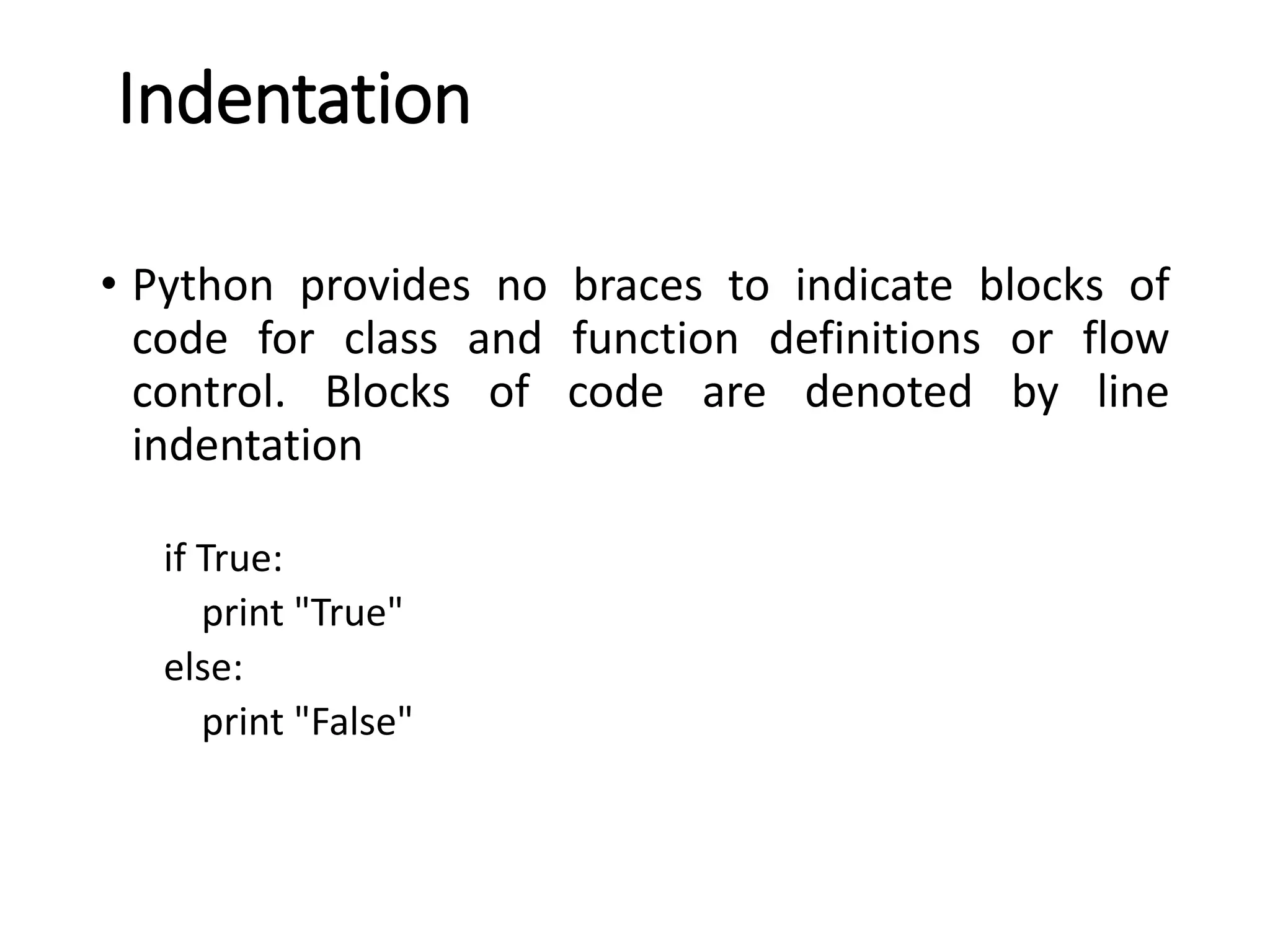
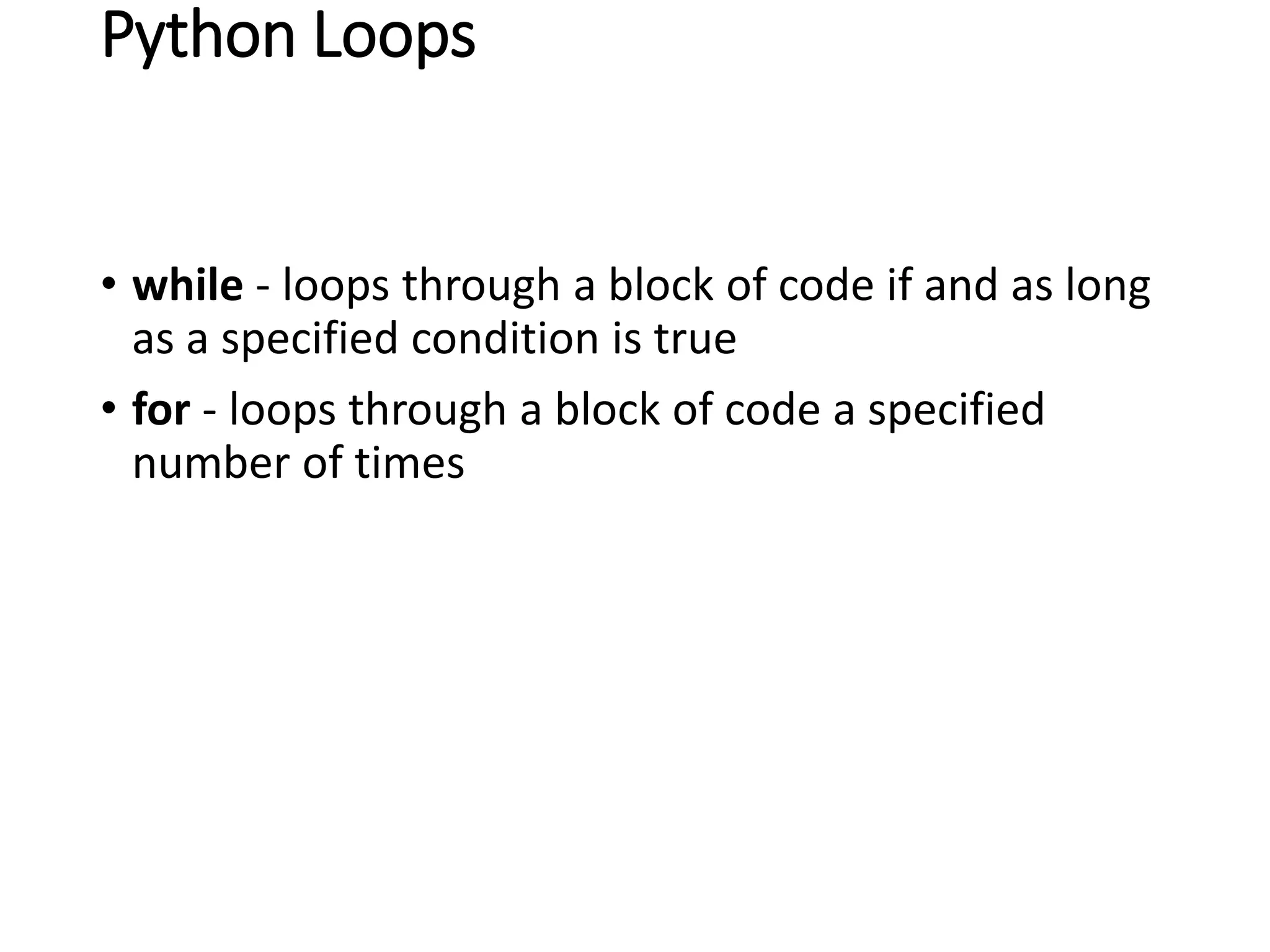
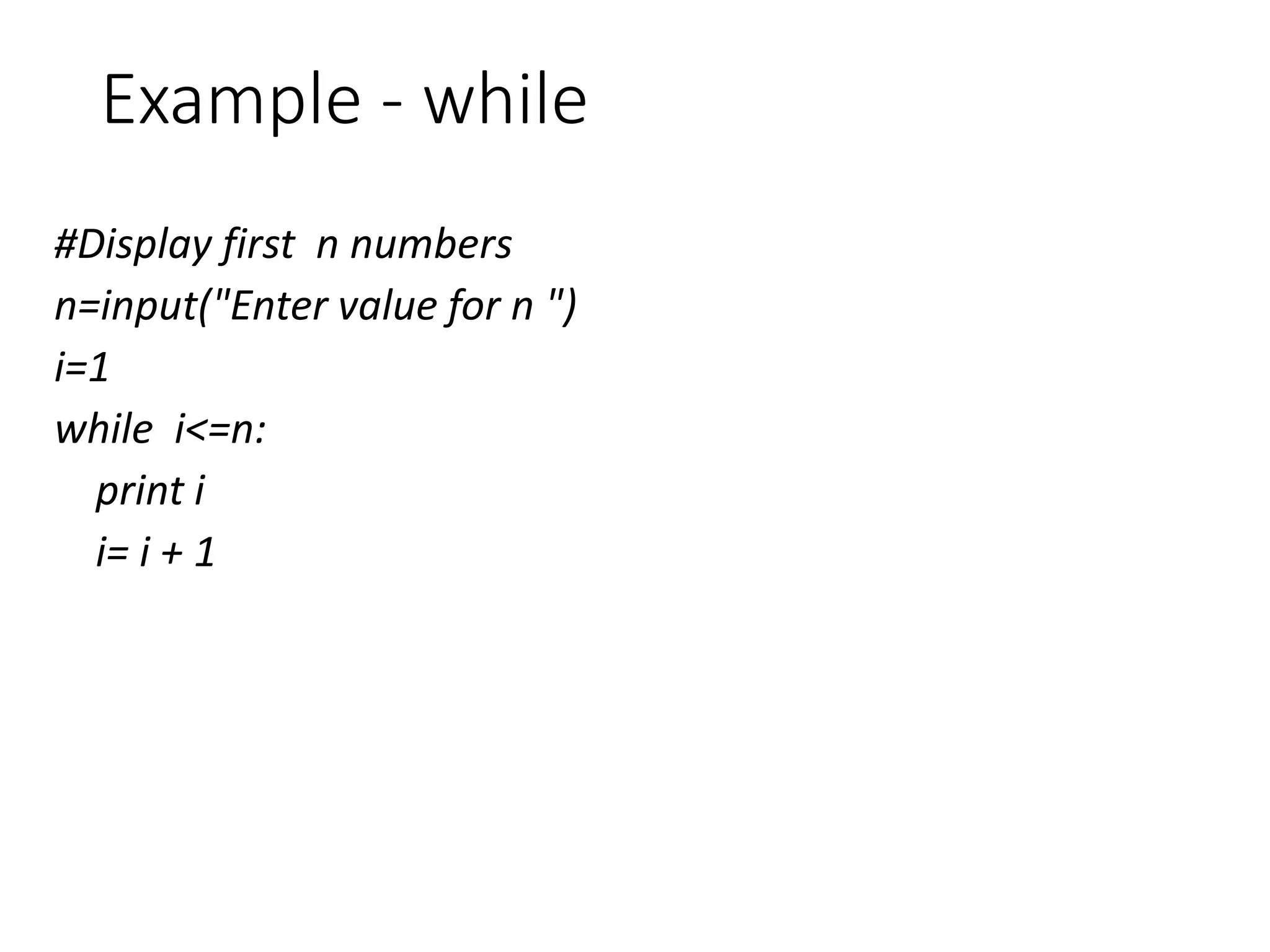
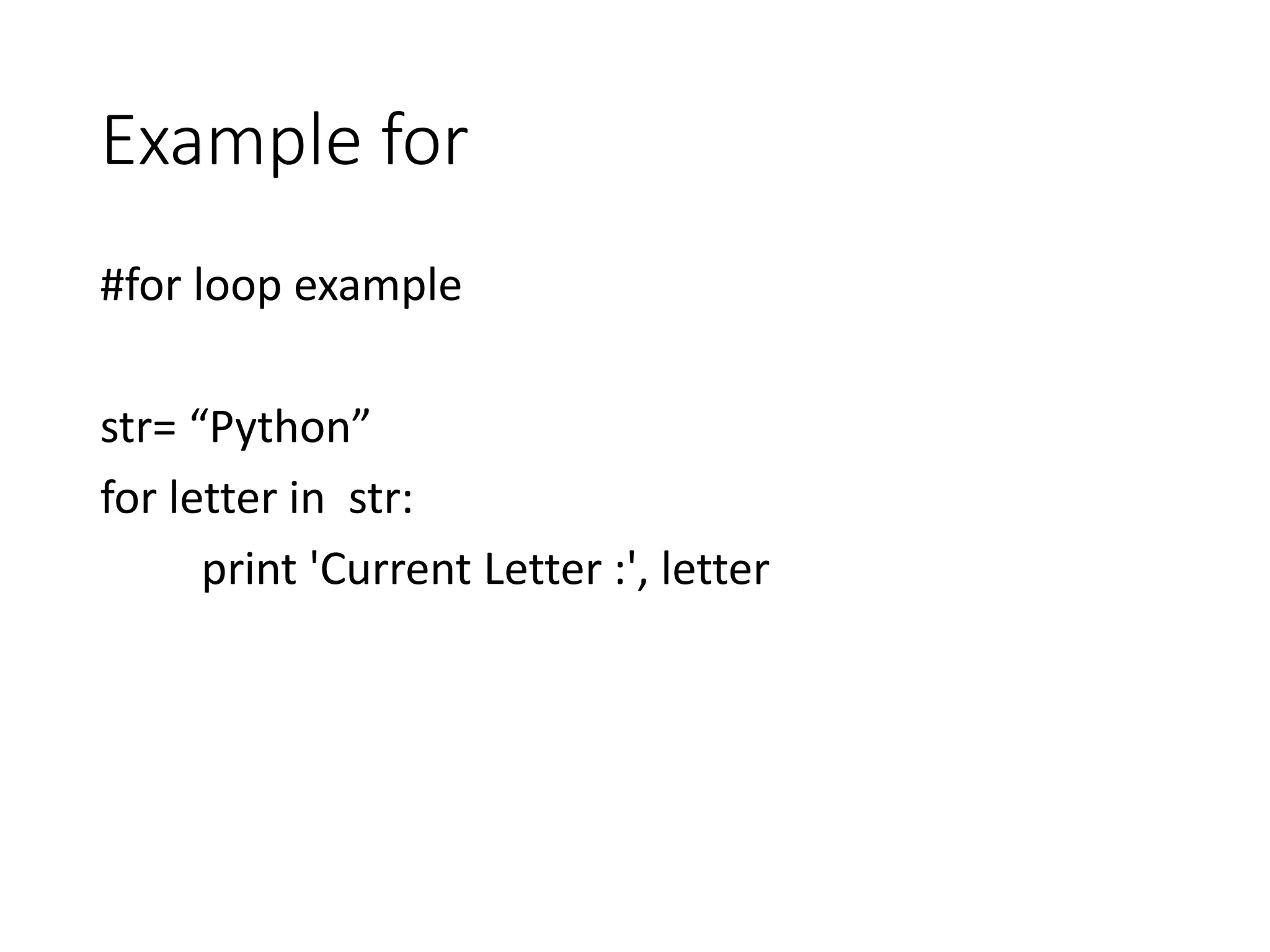
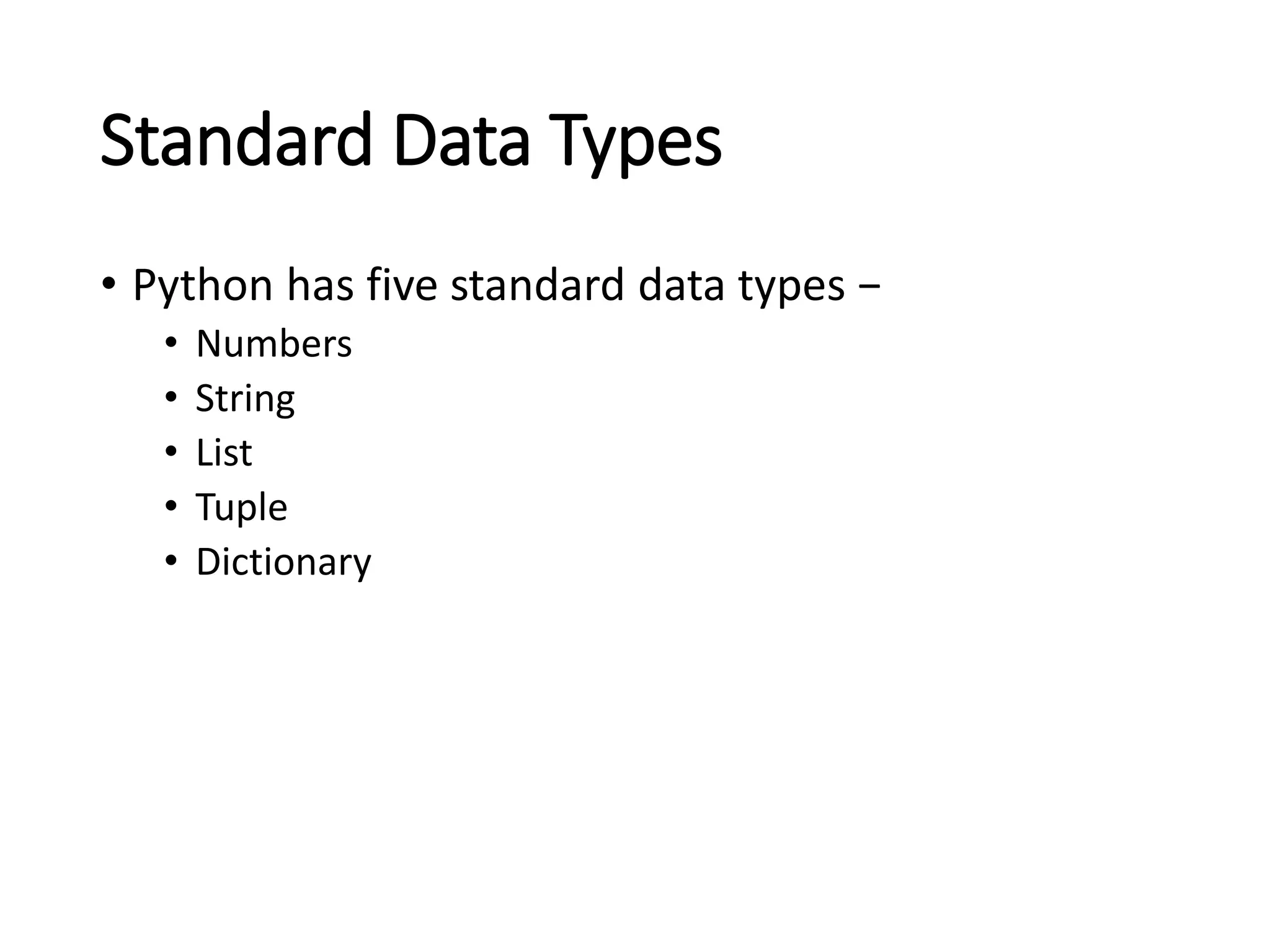
![Strings • Set of characters represented in the quotation marks. Python allows for either pairs of single or double quotes • str = 'Hello World!' • print str # Prints complete string • print str[0] # Prints first character of the string • print str[2:5] # Prints characters starting from 3rd to 5th • print str[2:] # Prints string starting from 3rd character • print str * 2 # Prints string two times • print str + "TEST" # Prints concatenated string](https://image.slidesharecdn.com/programminginpythonbytijithomas-171208004450/75/Programming-in-Python-13-2048.jpg)
![Python Lists • A list contains items separated by commas and enclosed within square brackets ([]). To some extent, lists are similar to arrays in C. One difference between them is that all the items belonging to a list can be of different data type. • list = [ 'abcd', 786 , 2.23, 'john', 70.2 ] ls = [123, 'john'] • print list # Prints complete list • print list[0] # Prints first element of the list • print list[1:3] # Prints elements starting from 2nd till 3rd • print list[2:] # Prints elements starting from 3rd element • print ls * 2 # Prints list two times • print list + ls # Prints concatenated lists](https://image.slidesharecdn.com/programminginpythonbytijithomas-171208004450/75/Programming-in-Python-14-2048.jpg)
![Python Lists • Add elements to a list 1. mylist.append(10) 2. mylist.extend(["Raju",20,30]) 3. mylist.insert(1,"Ammu") • Search within lists -mylist.index('Anu’) • Delete elements from a list - mylist.remove(20)](https://image.slidesharecdn.com/programminginpythonbytijithomas-171208004450/75/Programming-in-Python-15-2048.jpg)
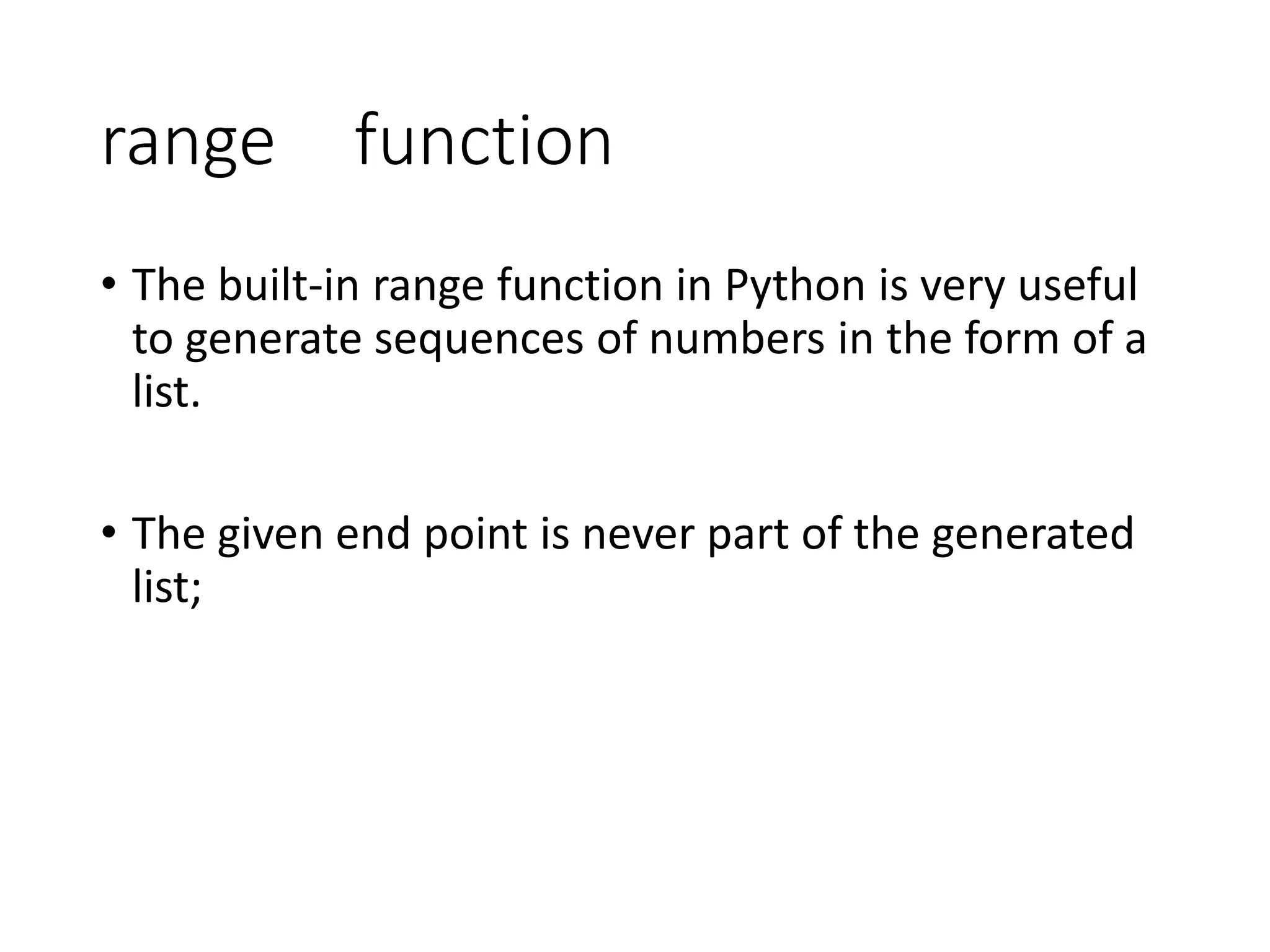
![Basic list operations Length - len Concatenation : + Repetition - ['Hi!'] * 4 Membership - 3 in [1, 2, 3] Iteration- for x in [1, 2, 3]: print x,](https://image.slidesharecdn.com/programminginpythonbytijithomas-171208004450/75/Programming-in-Python-17-2048.jpg)
![Sorting an array - list.sort() fruits = ["lemon", "orange", "banana", "apple"] print fruits fruits.sort() for i in fruits: print i print "nnnReverse ordernnn" fruits.sort(reverse=True) for i in fruits: print i](https://image.slidesharecdn.com/programminginpythonbytijithomas-171208004450/75/Programming-in-Python-18-2048.jpg)
![Python Tuples • A tuple consists of a number of values separated by commas. Tuples are enclosed within parentheses. • The main differences between lists and tuples are: Lists are enclosed in brackets ( [ ] ) and their elements and size can be changed, while tuples are enclosed in parentheses ( ( ) ) and cannot be updated. • read-only lists](https://image.slidesharecdn.com/programminginpythonbytijithomas-171208004450/75/Programming-in-Python-19-2048.jpg)
![Tuple Example • tuple = ( 'abcd', 786 , 2.23, 'john', 70.2 ) • tinytuple = (123, 'john') • print tuple # Prints complete list • print tuple[0] # Prints first element of the list • print tuple[1:3] # Prints elements starting from 2nd till 3rd • print tuple[2:] # Prints elements starting from 3rd element • print tinytuple * 2 # Prints list two times • print tuple + tinytuple # Prints concatenated lists](https://image.slidesharecdn.com/programminginpythonbytijithomas-171208004450/75/Programming-in-Python-20-2048.jpg)
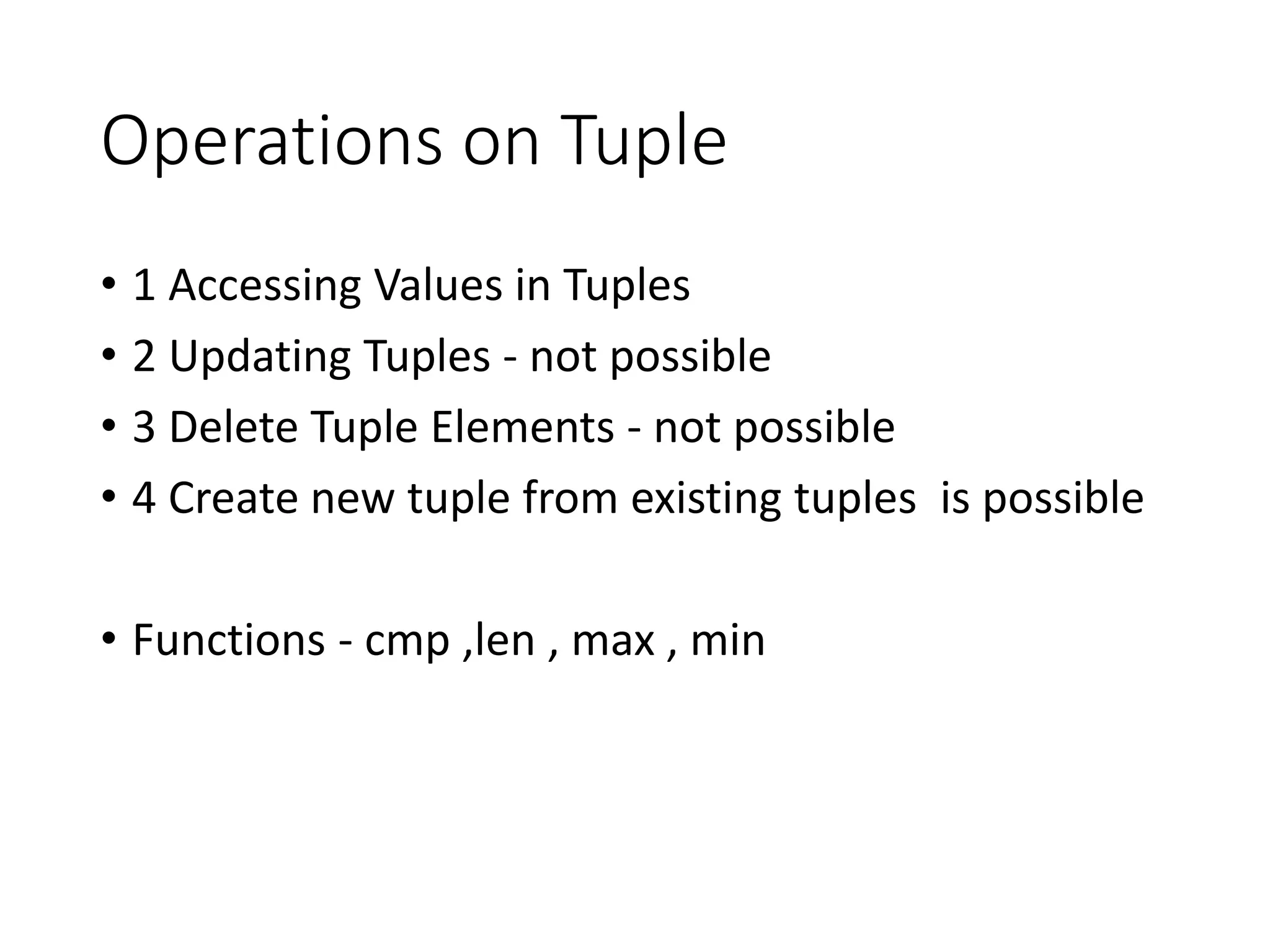
![Python Dictionary • Python's dictionaries are kind of hash table type. They work like associative arrays or hashes found in Perl and consist of key-value pairs • Dictionaries are enclosed by curly braces ({ }) and values can be assigned and accessed using square braces ([]).](https://image.slidesharecdn.com/programminginpythonbytijithomas-171208004450/75/Programming-in-Python-22-2048.jpg)
![Example • dict = {} • dict['one'] = "This is one" • dict[2] = "This is two" • tinydict = {'name': 'john','code':6734, 'dept': 'sales'} • print dict['one'] # Prints value for 'one' key • print dict[2] # Prints value for 2 key • print tinydict # Prints complete dictionary • print tinydict.keys() # Prints all the keys • print tinydict.values() # Prints all the values](https://image.slidesharecdn.com/programminginpythonbytijithomas-171208004450/75/Programming-in-Python-23-2048.jpg)
![Python Functions • Function blocks begin with the keyword def followed by the function name and parentheses ( ( ) ). • Any input parameters or arguments should be placed within these parentheses. • The first statement of a function can be an optional statement - the documentation string of the function or docstring. . • The statement return [expression] exits a function, optionally passing back an expression to the caller. A return statement with no arguments is the same as return None.](https://image.slidesharecdn.com/programminginpythonbytijithomas-171208004450/75/Programming-in-Python-24-2048.jpg)
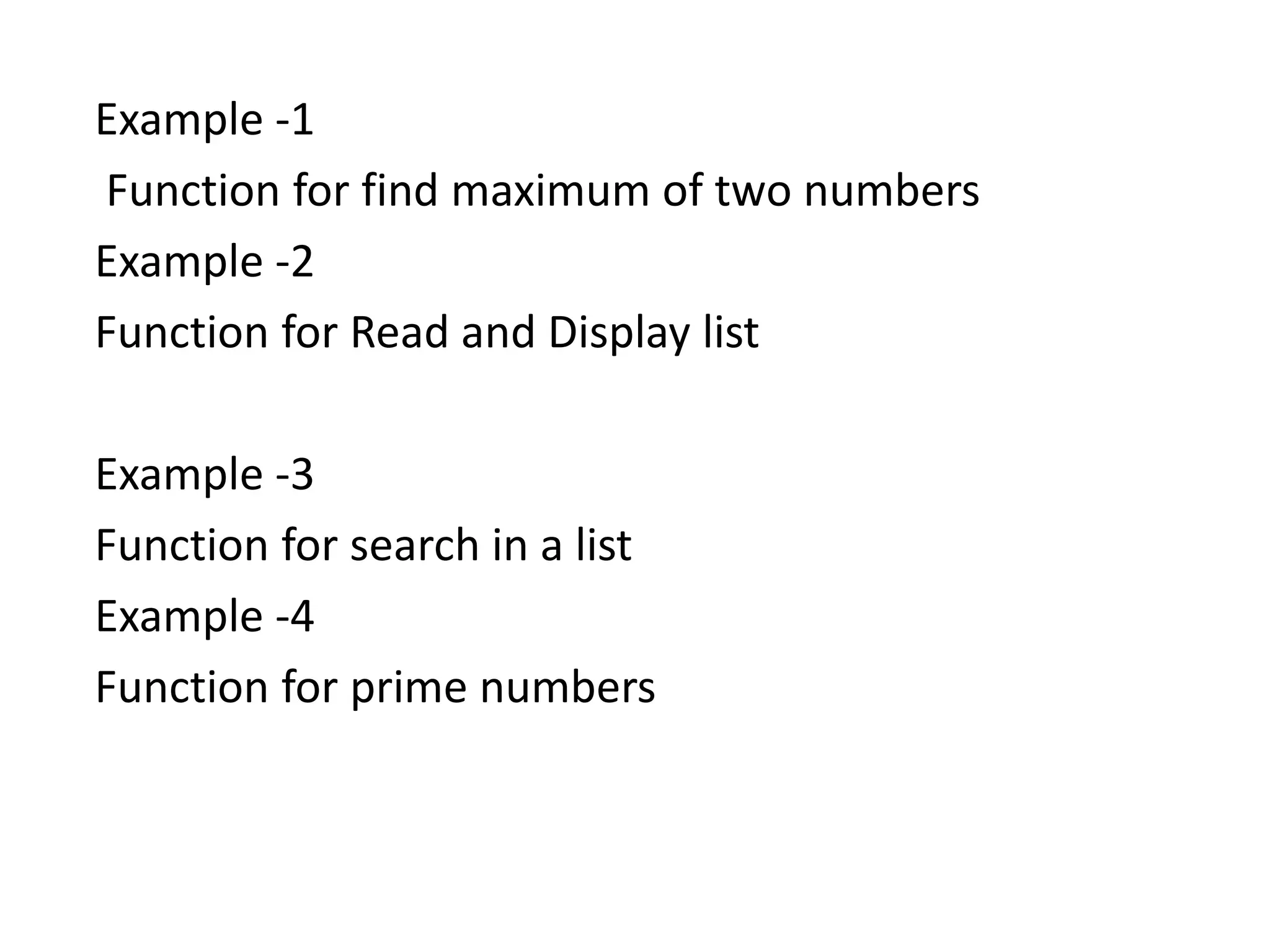
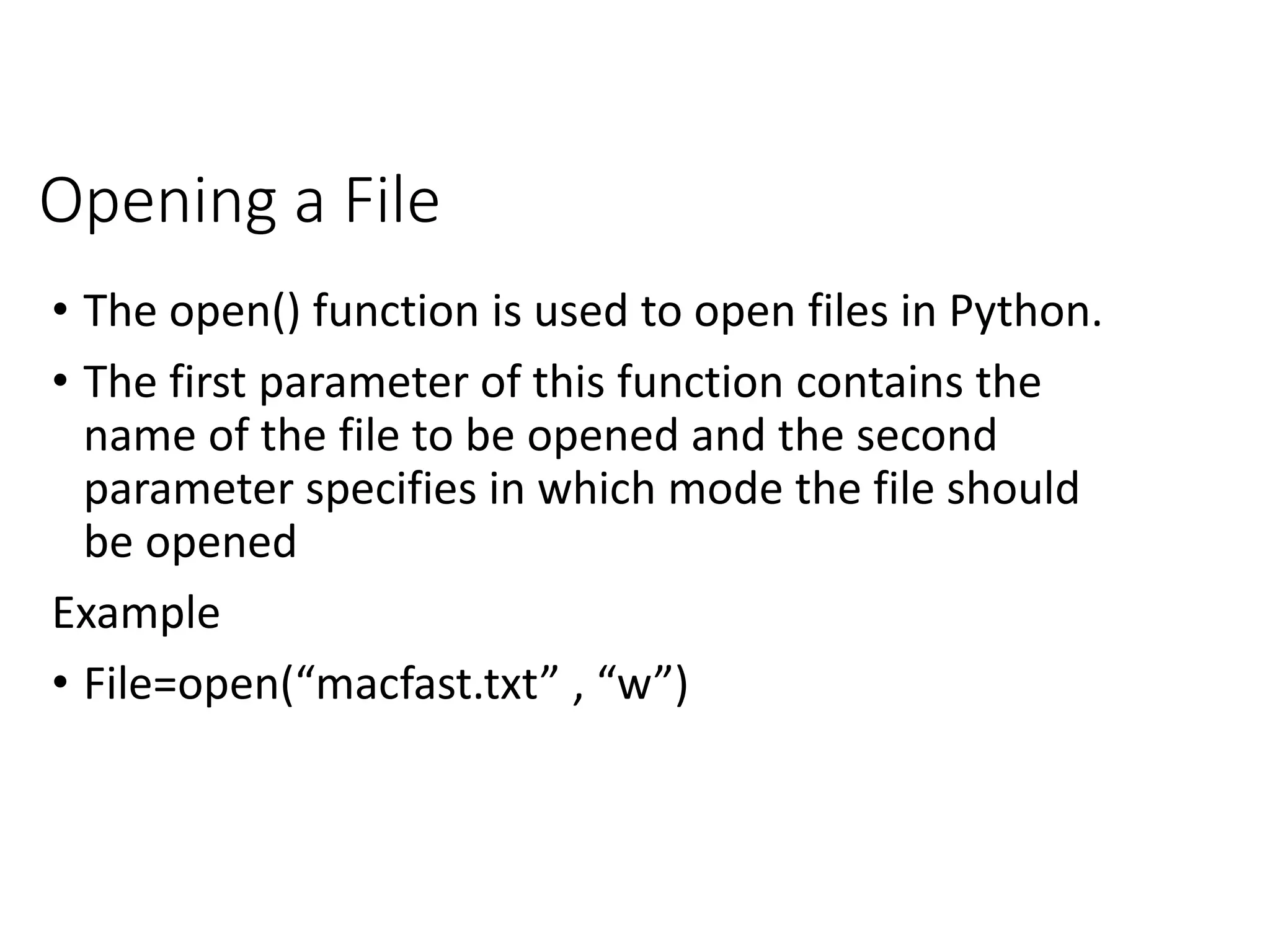
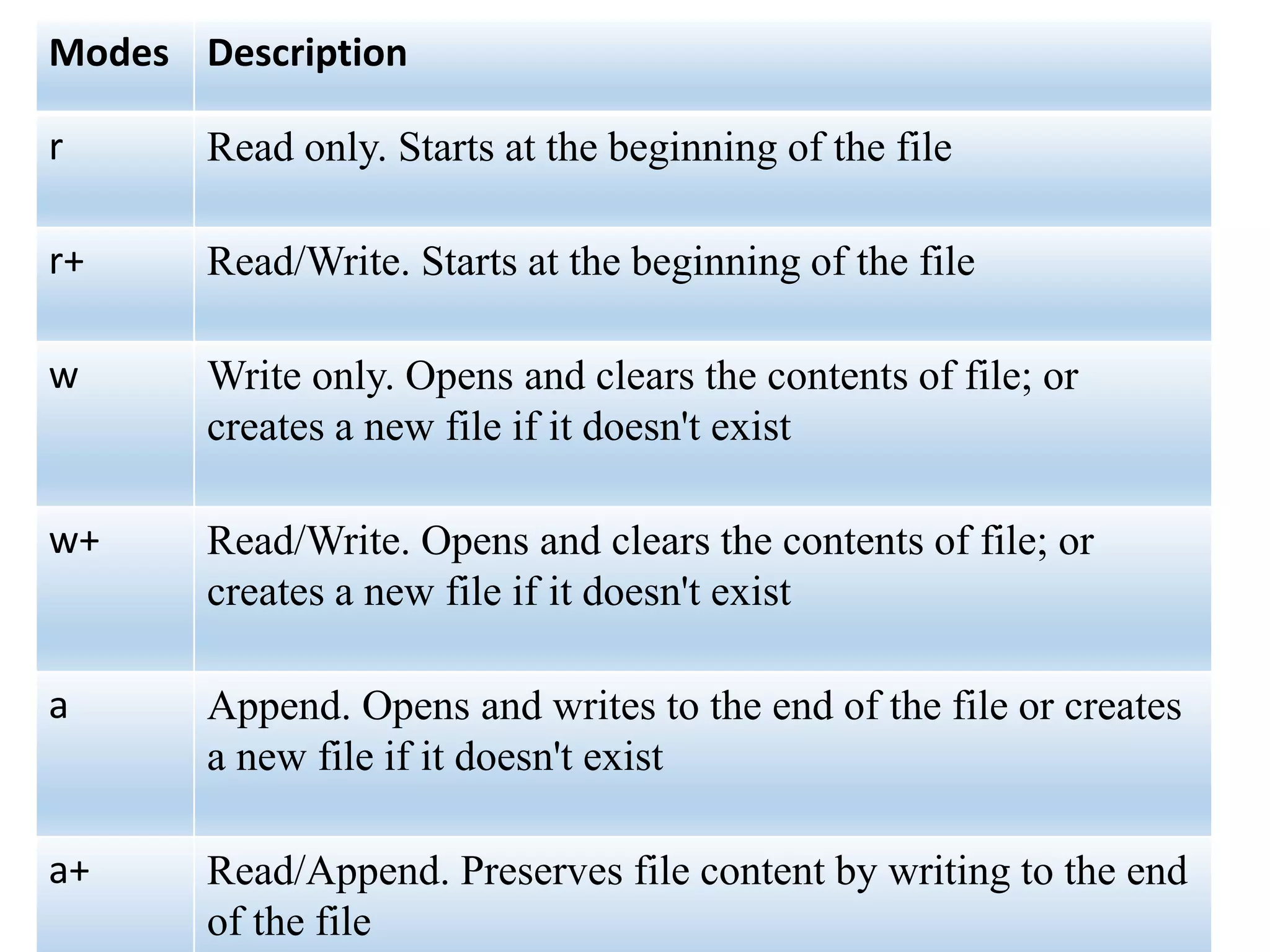
![• Opening and Closing Files • The open Function file object = open(file_name [, access_mode][, buffering]) • file_name: The file_name argument is a string value that contains the name of the file that you want to access. • access_mode: The access_mode determines the mode in which the file has to be opened, i.e., read, write, append, etc. • The close() Method The close() method of a file object flushes any unwritten information and closes the file object, after which no more writing can be done.](https://image.slidesharecdn.com/programminginpythonbytijithomas-171208004450/75/Programming-in-Python-28-2048.jpg)
